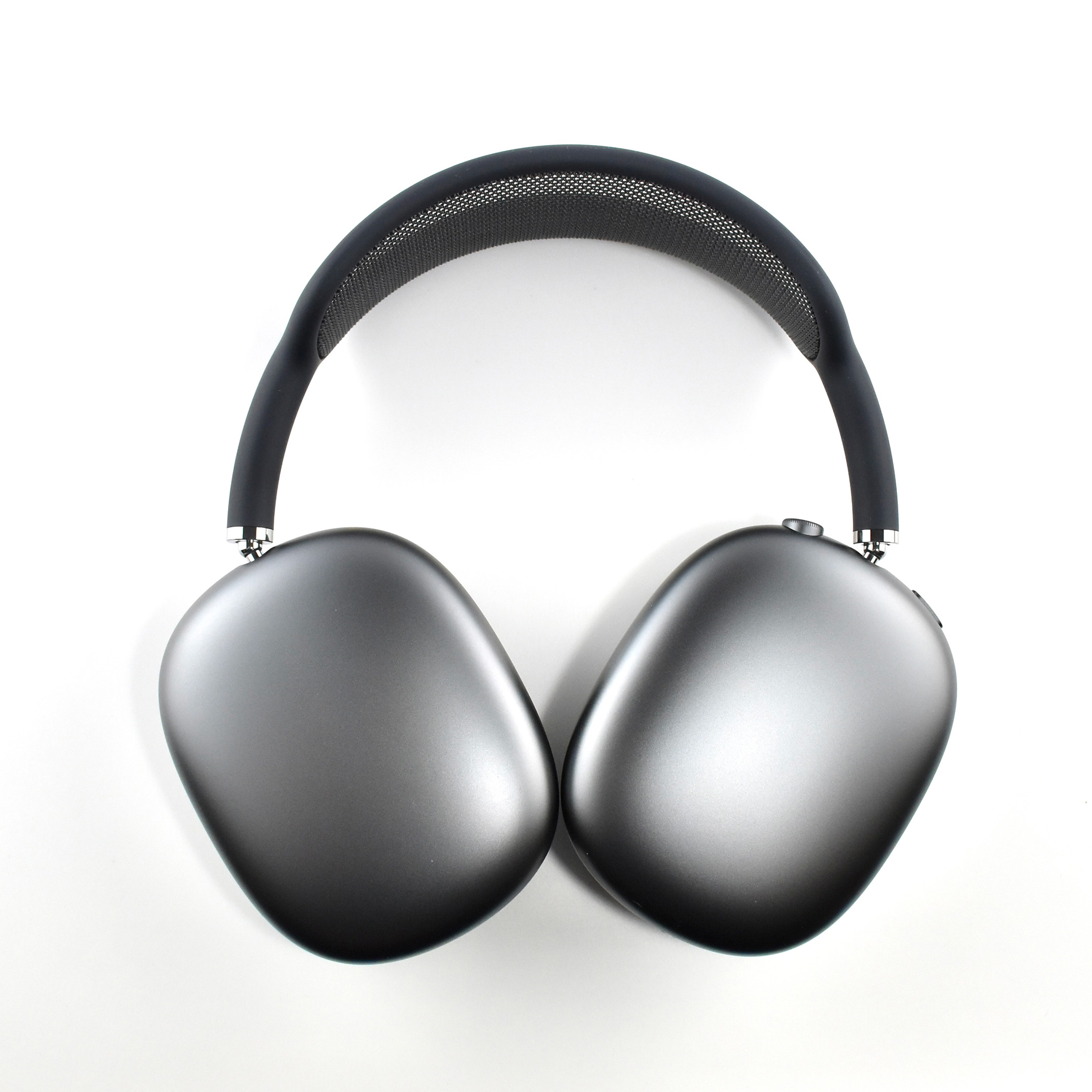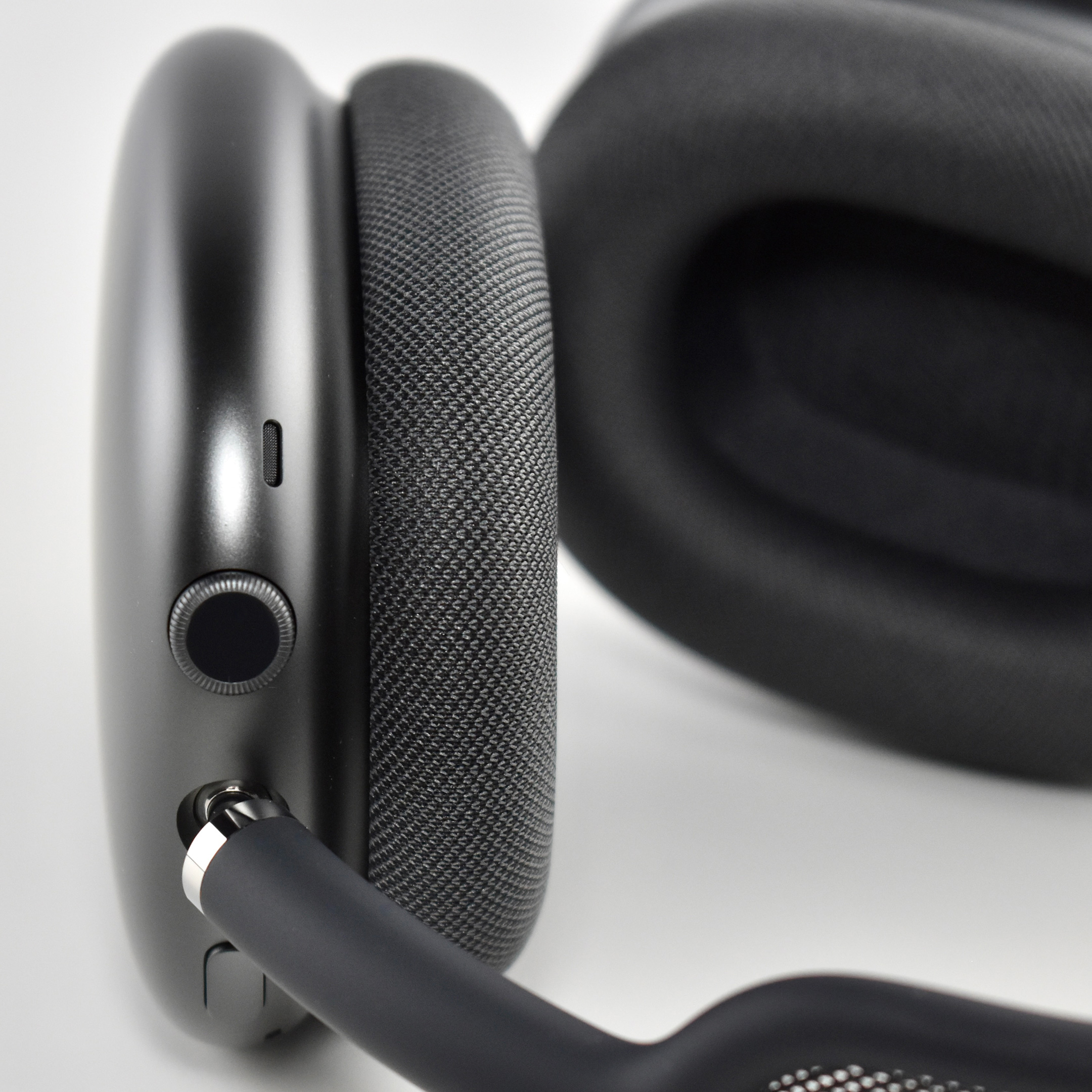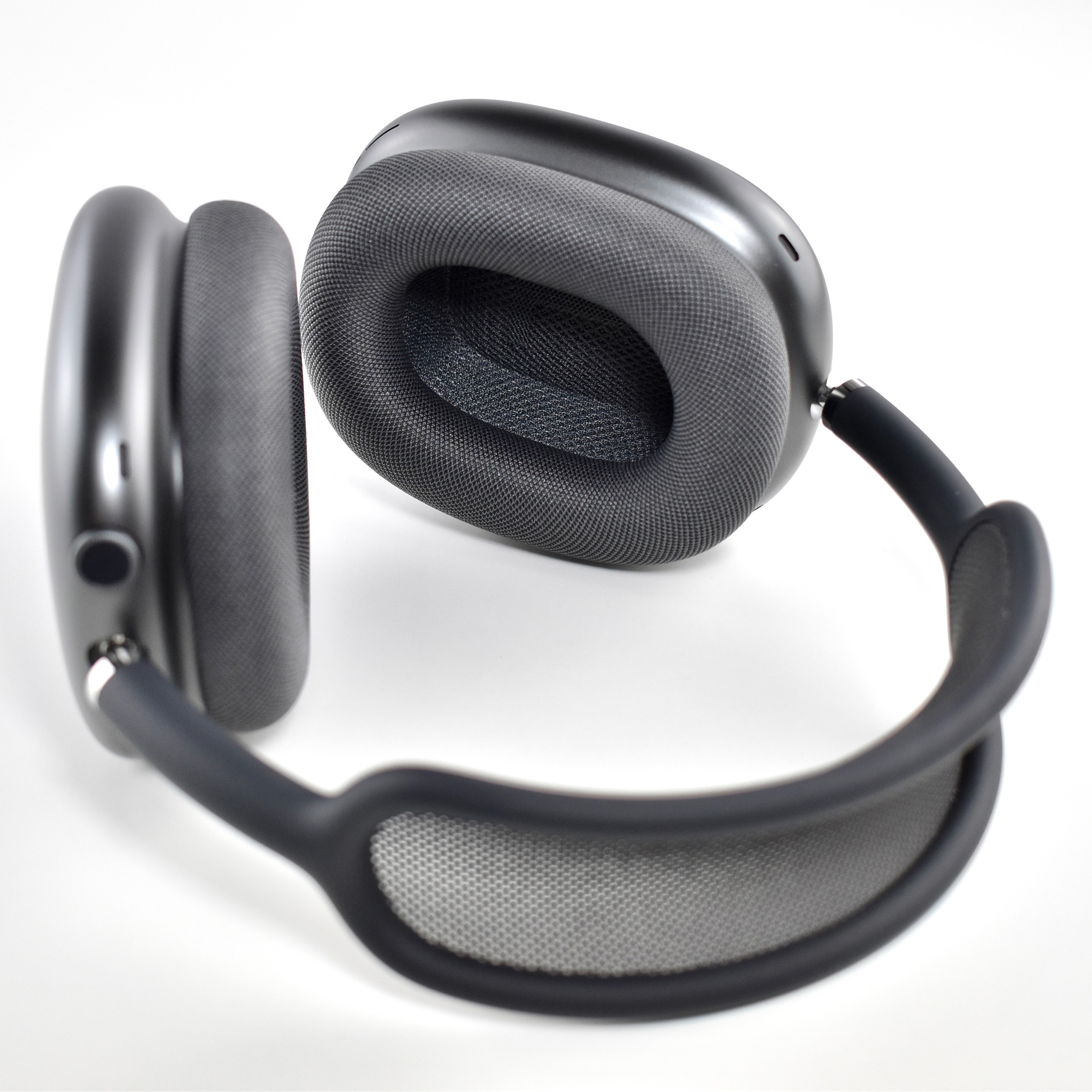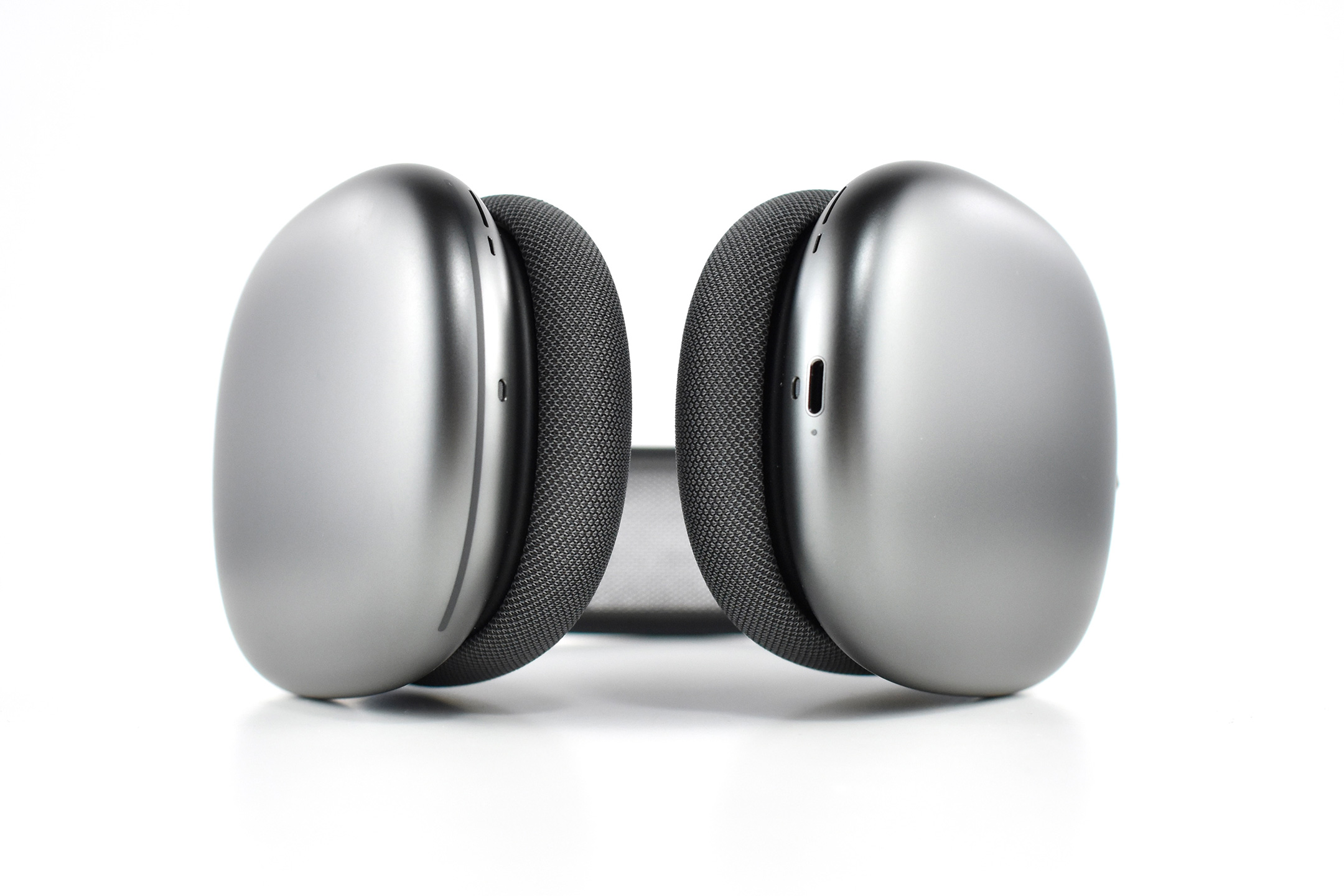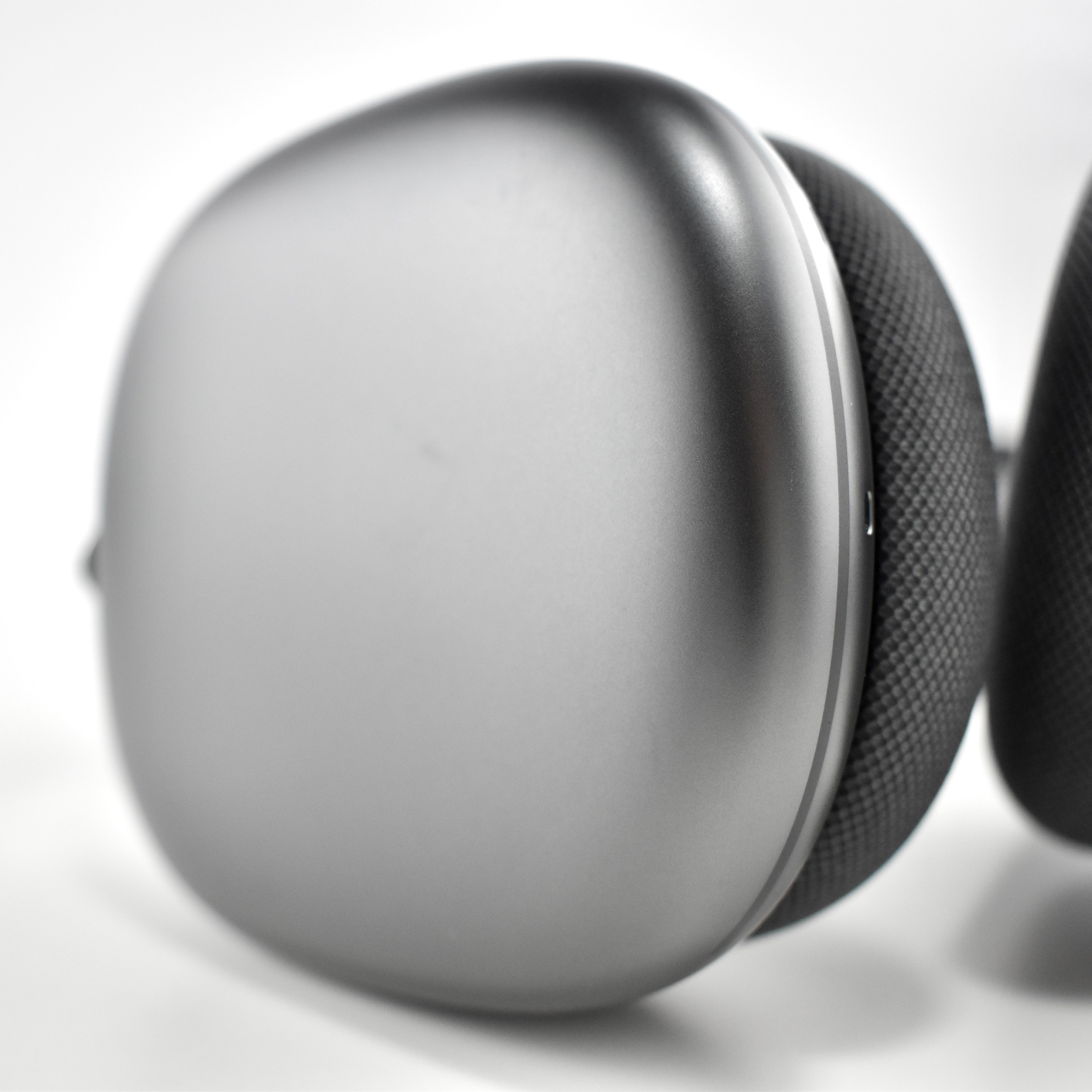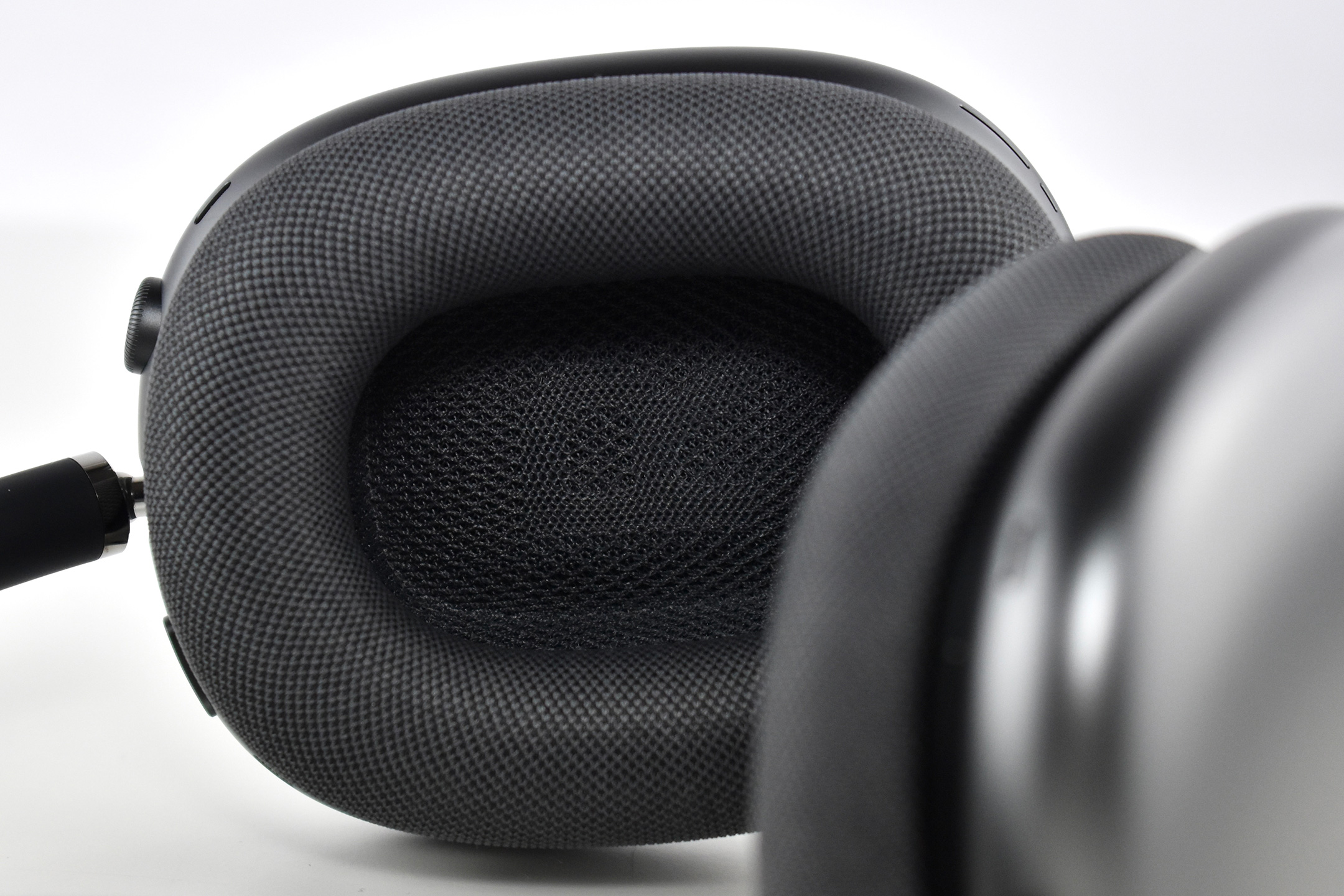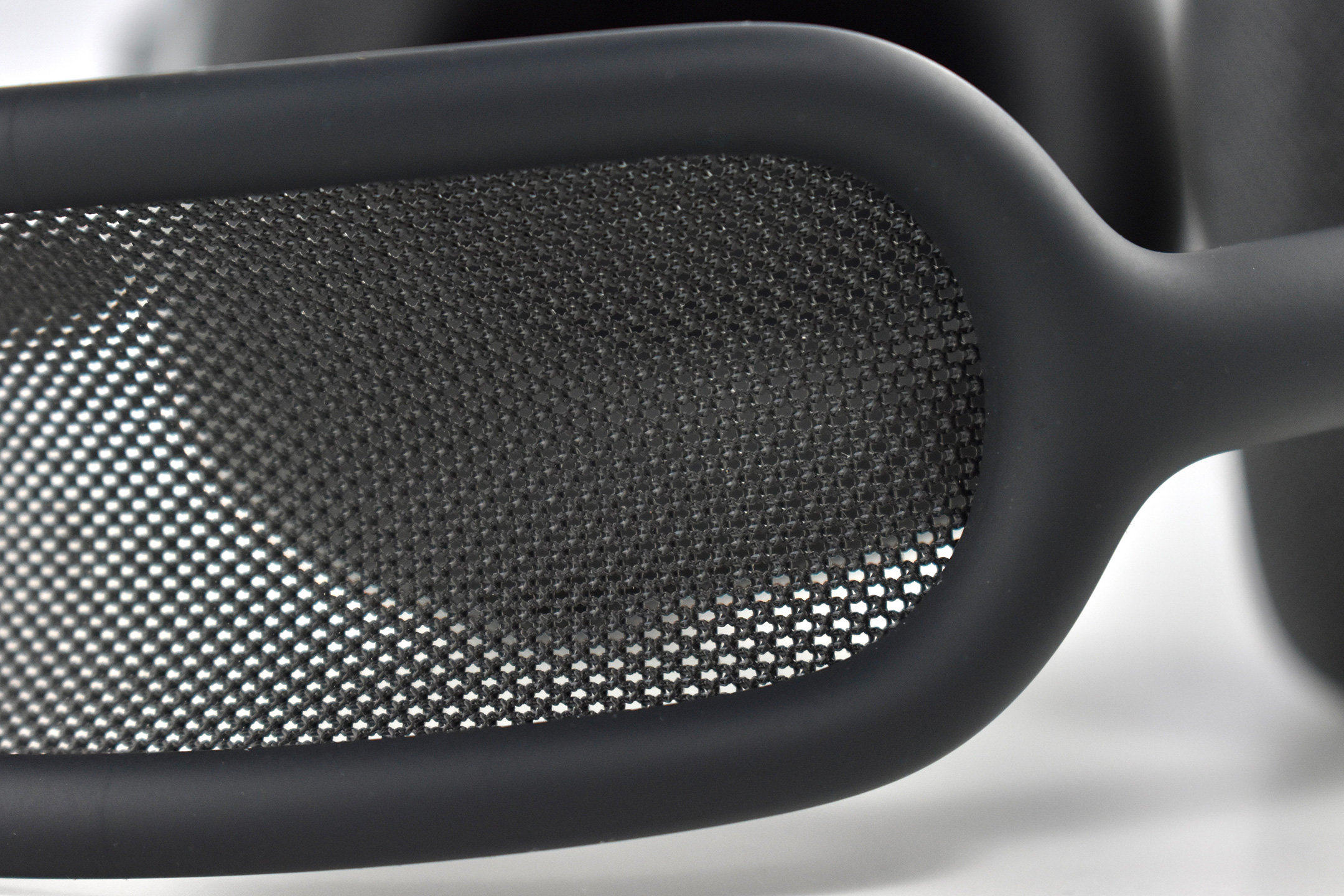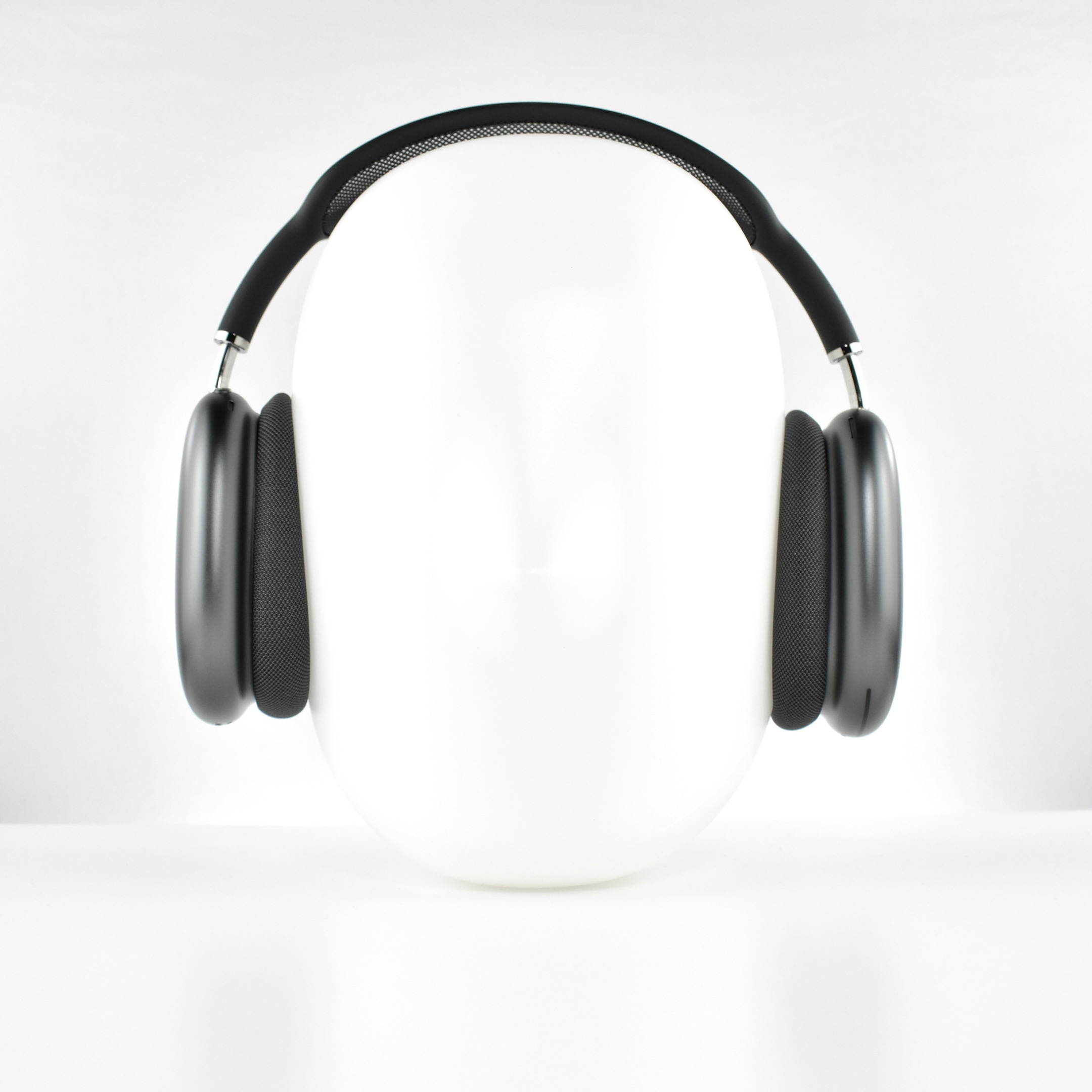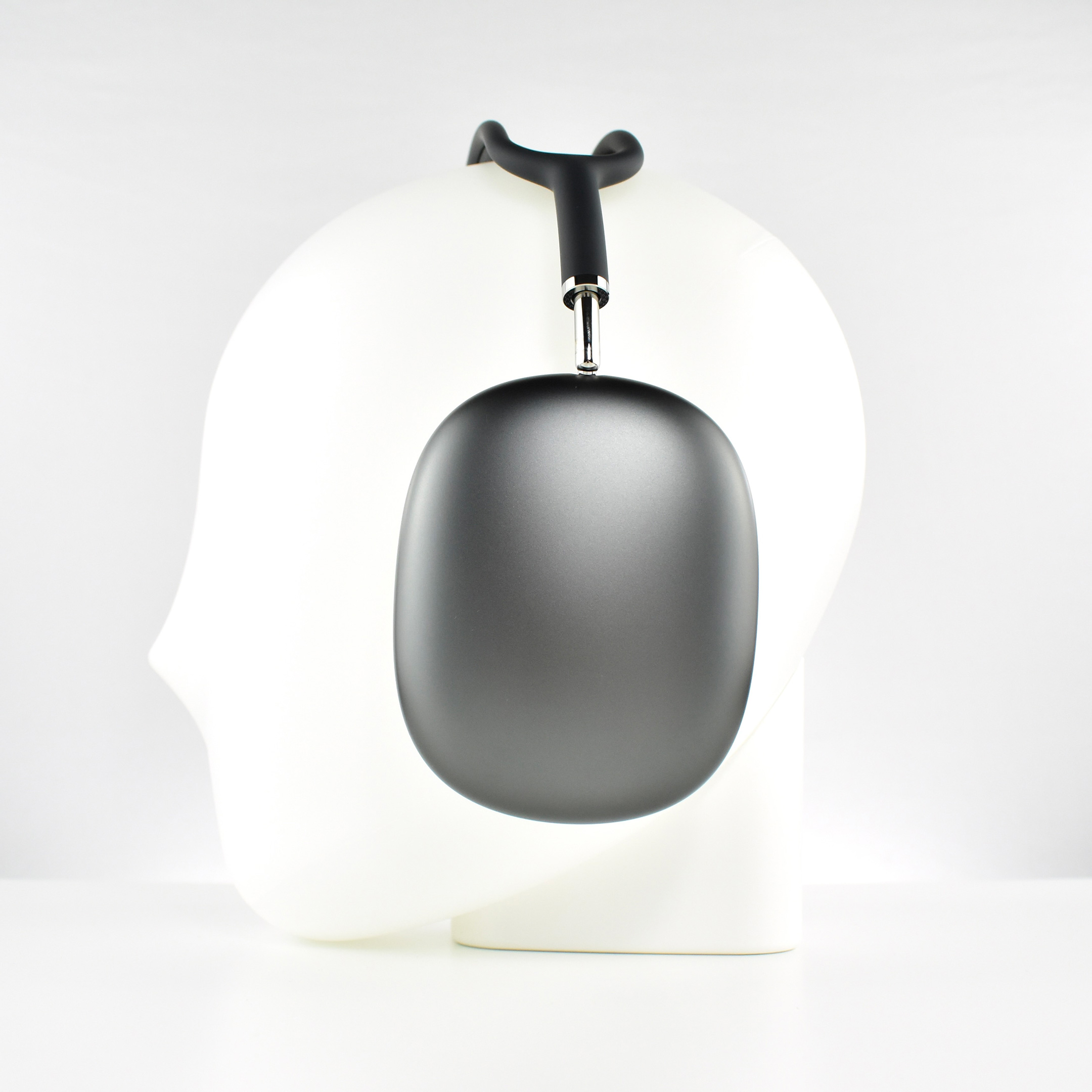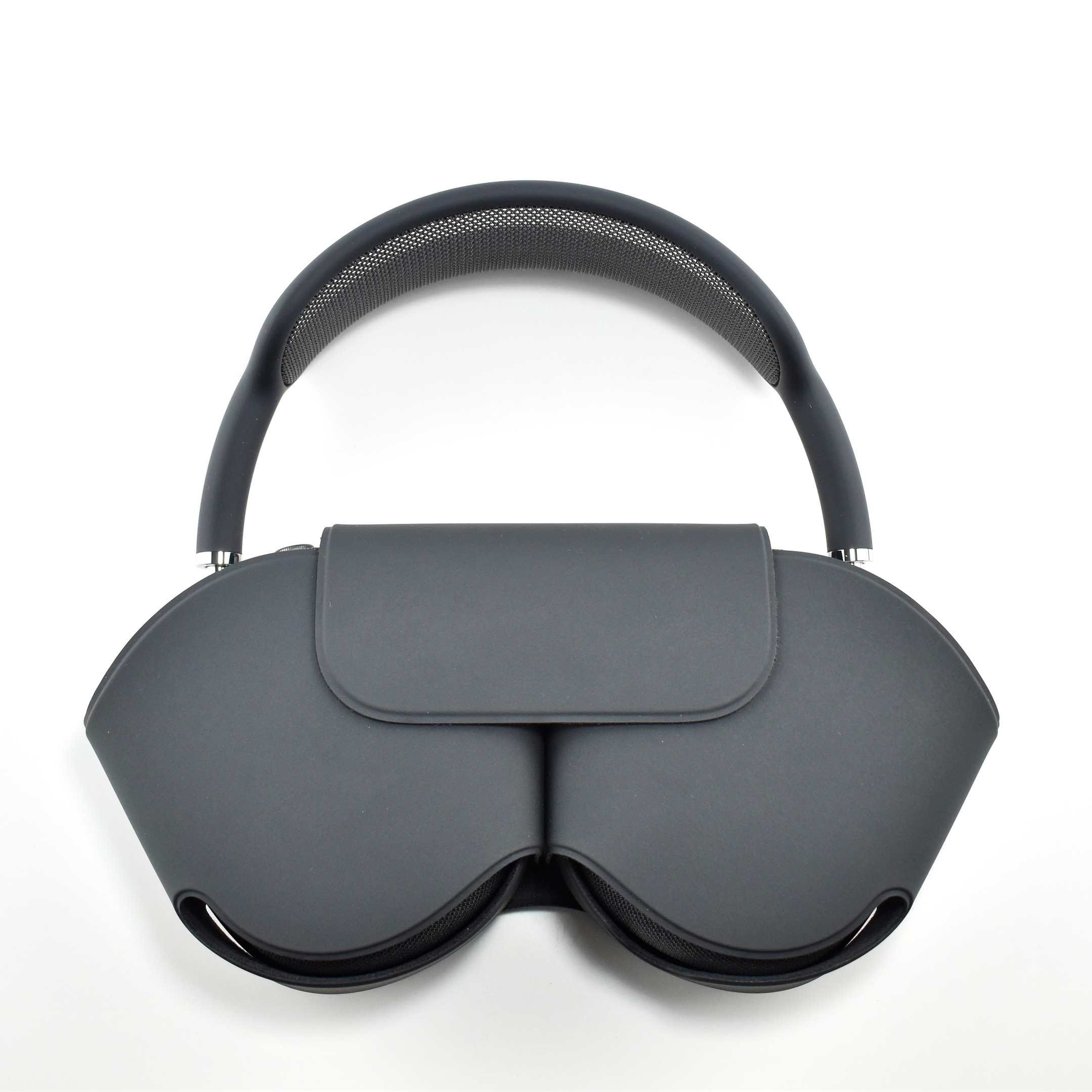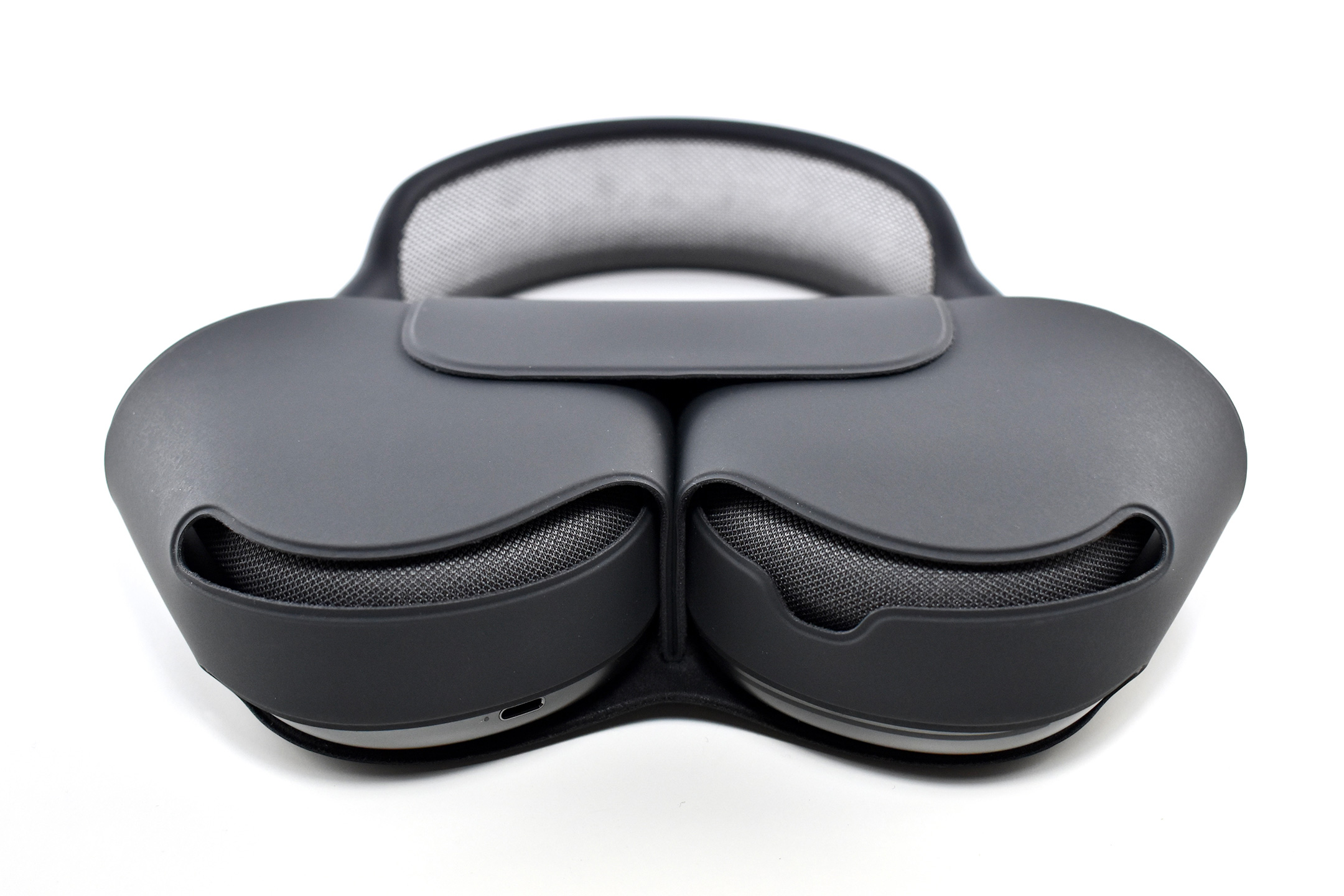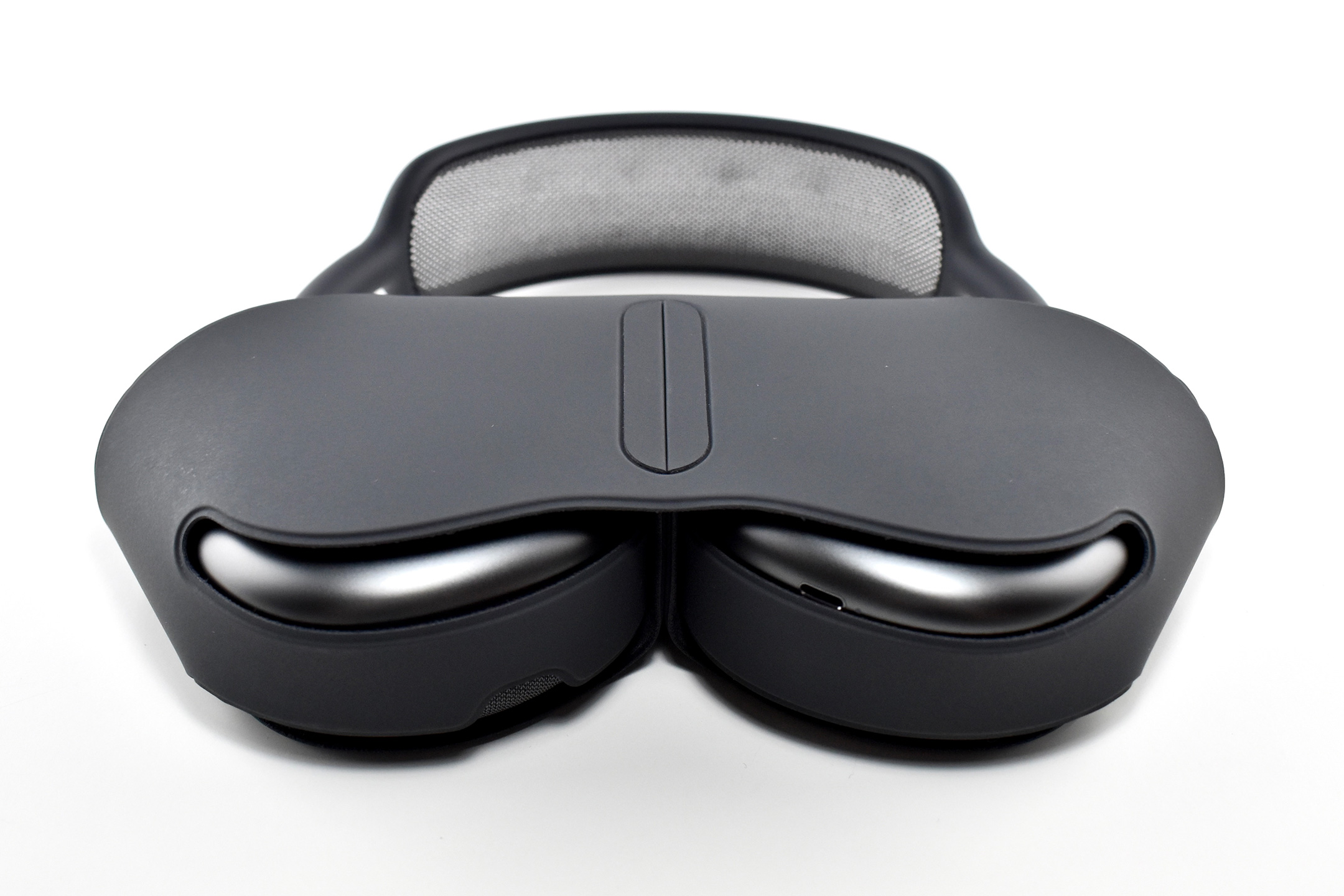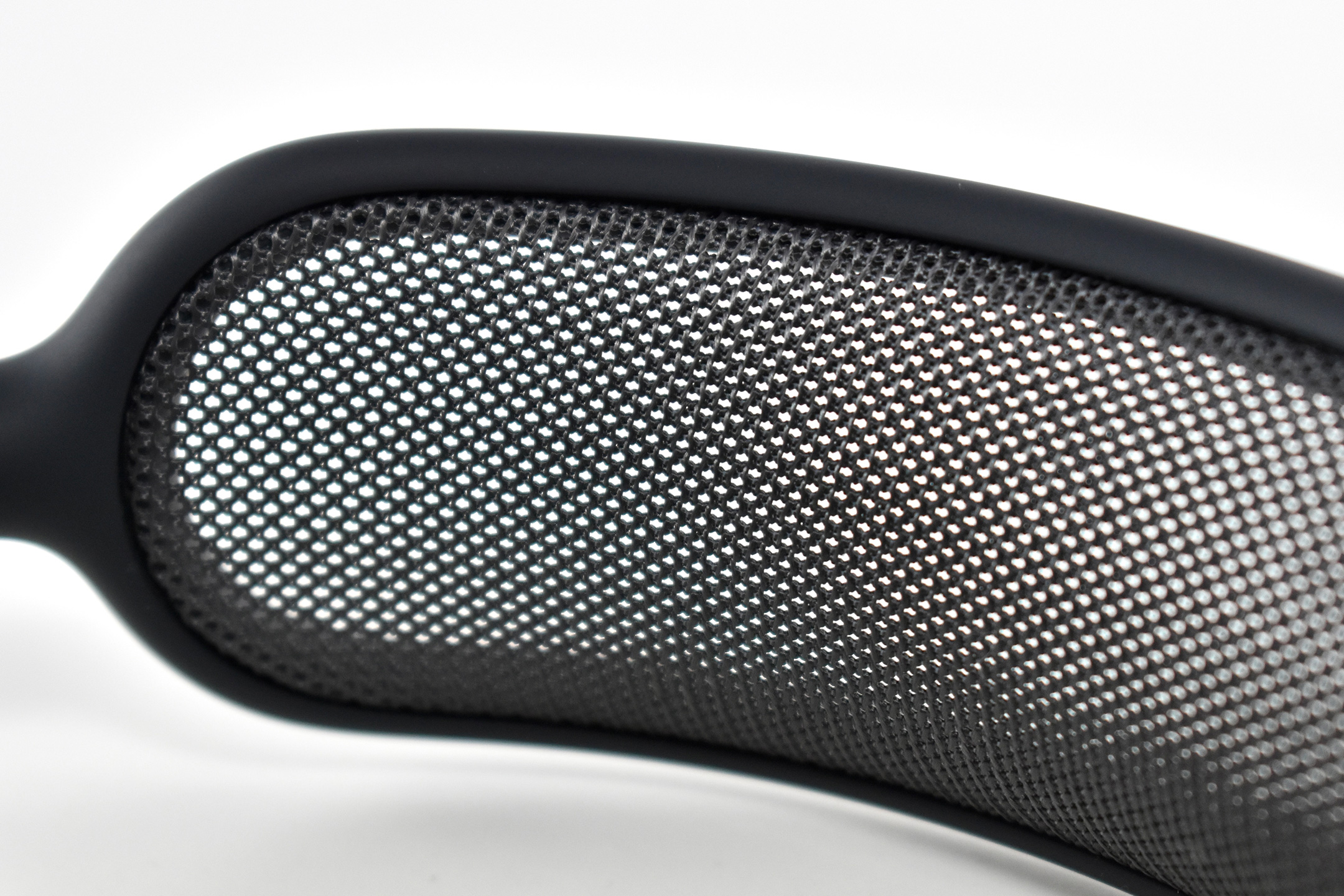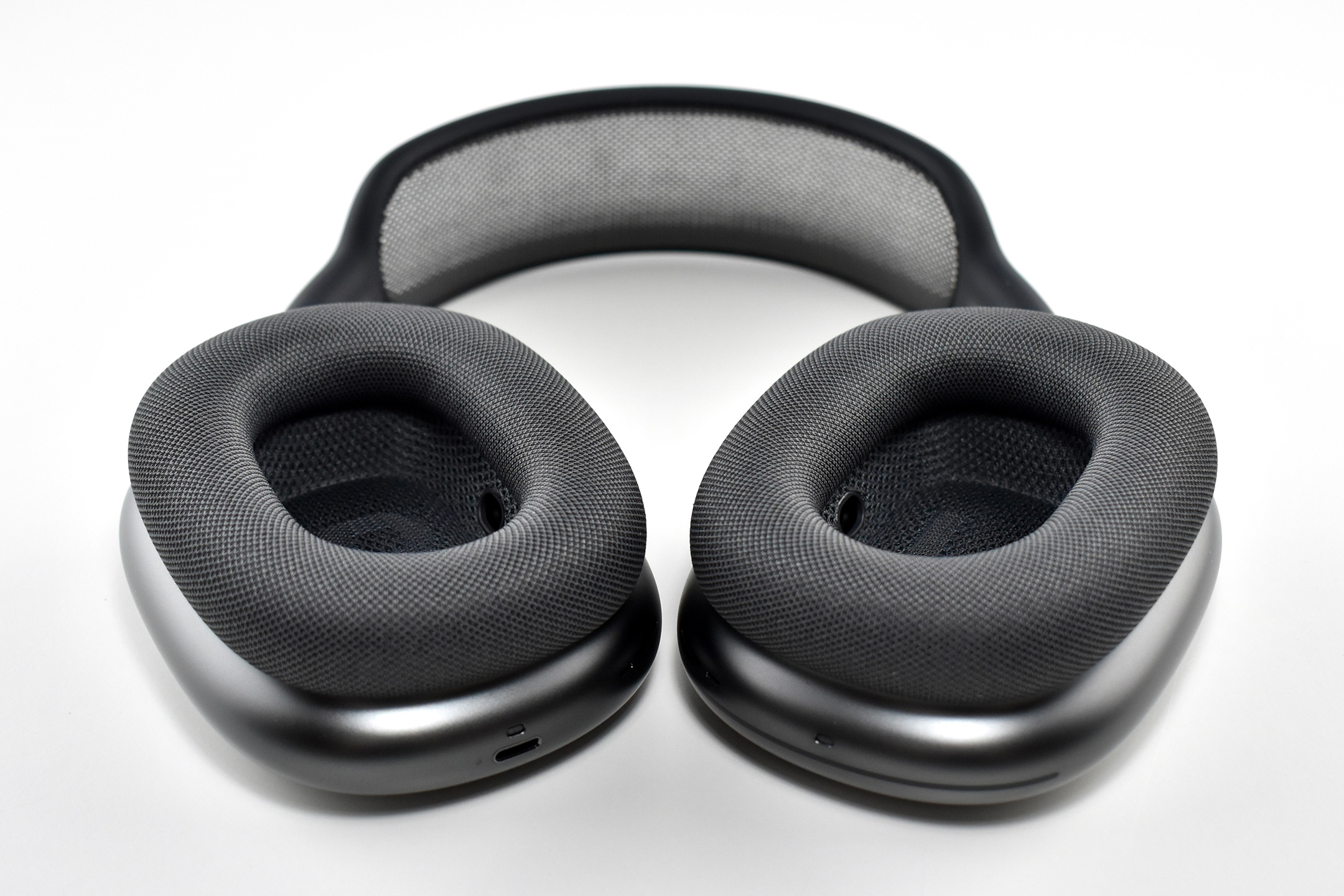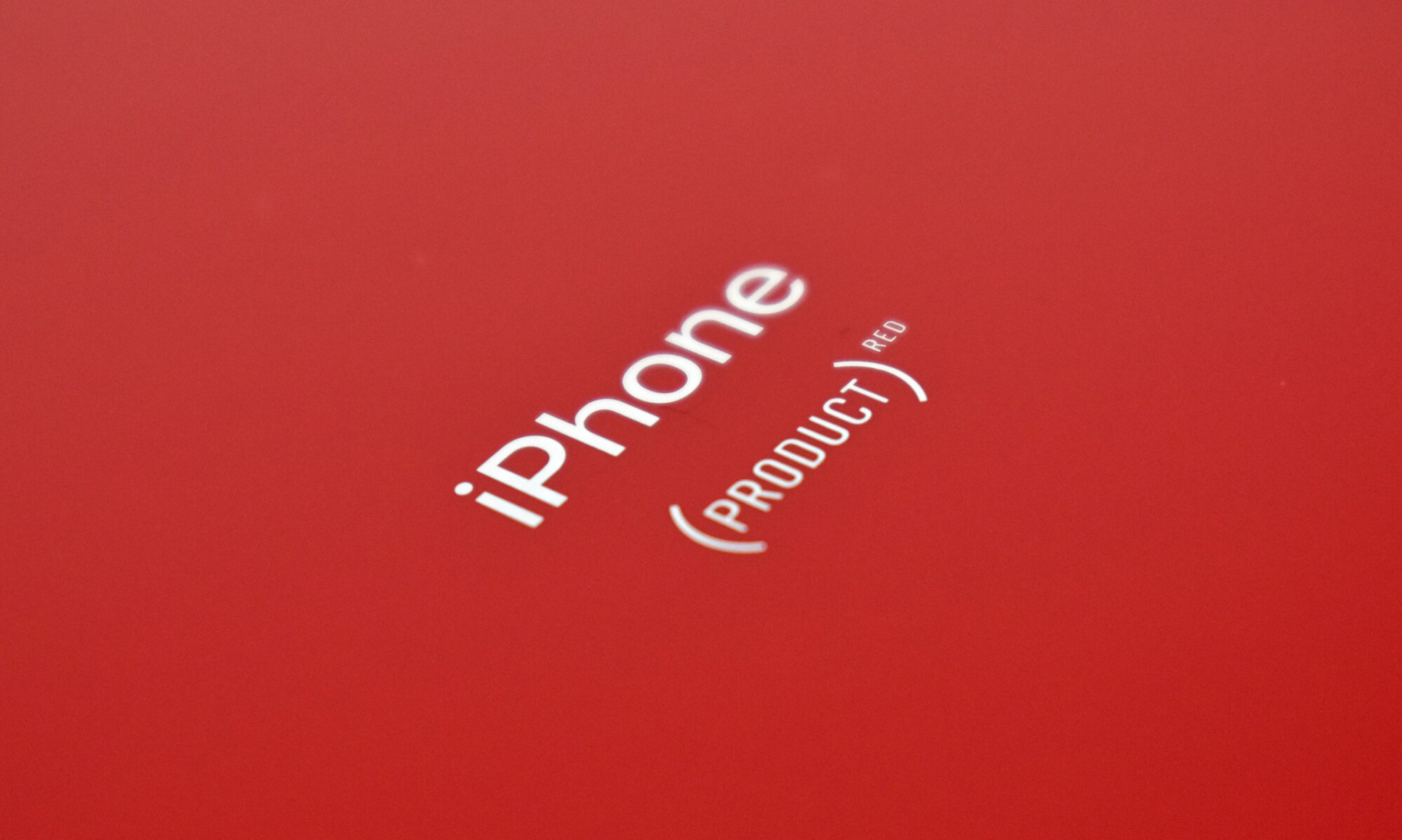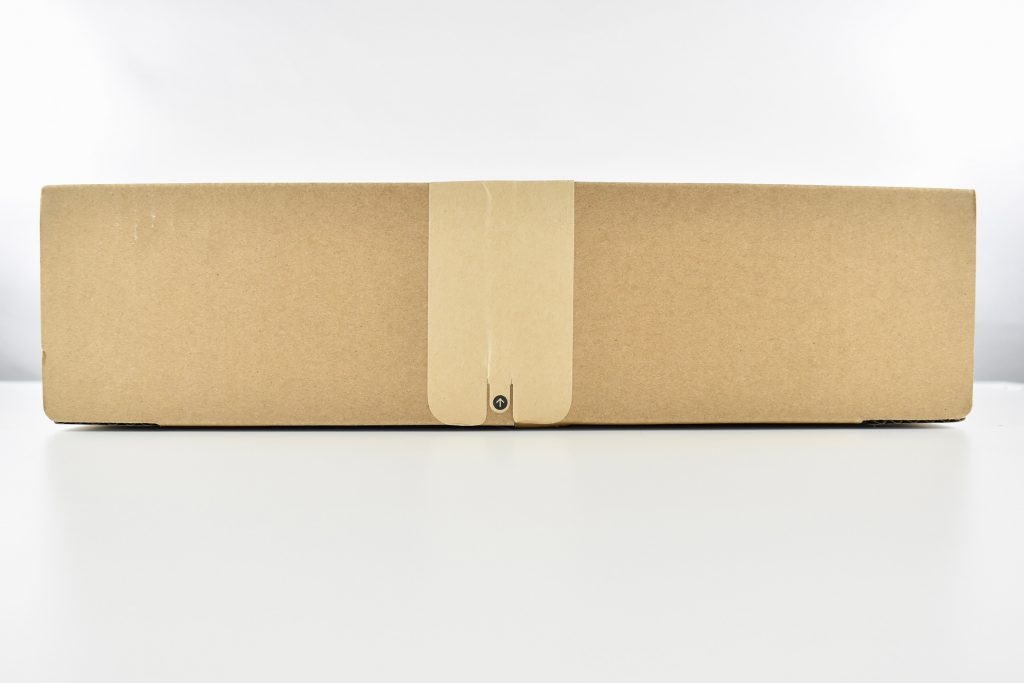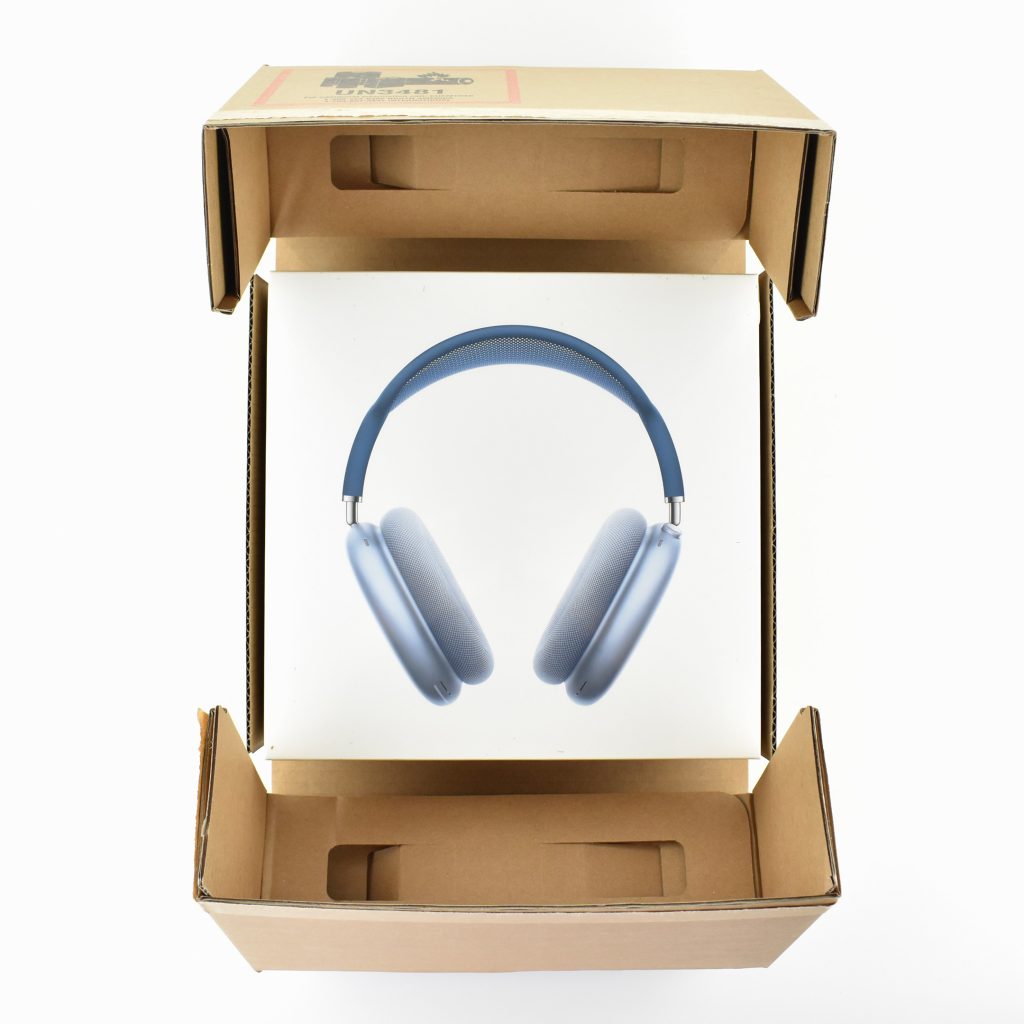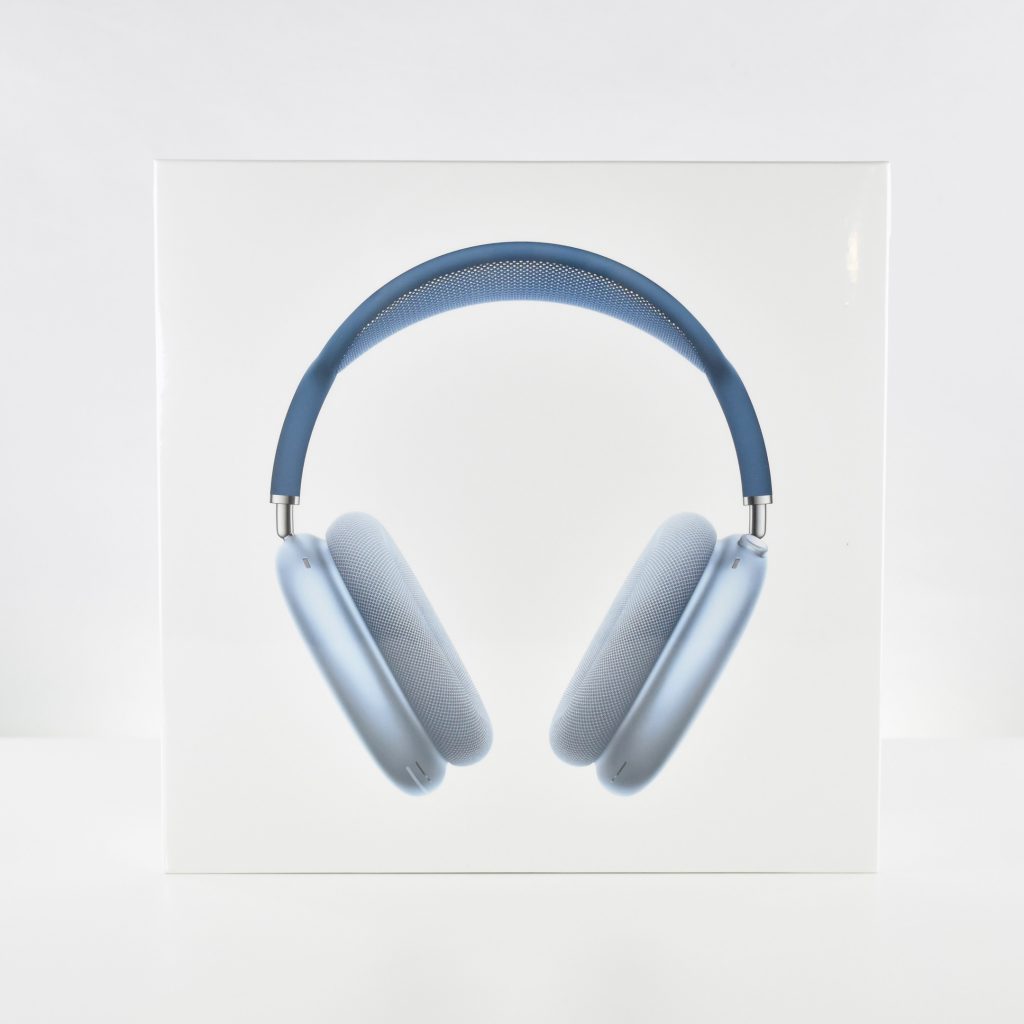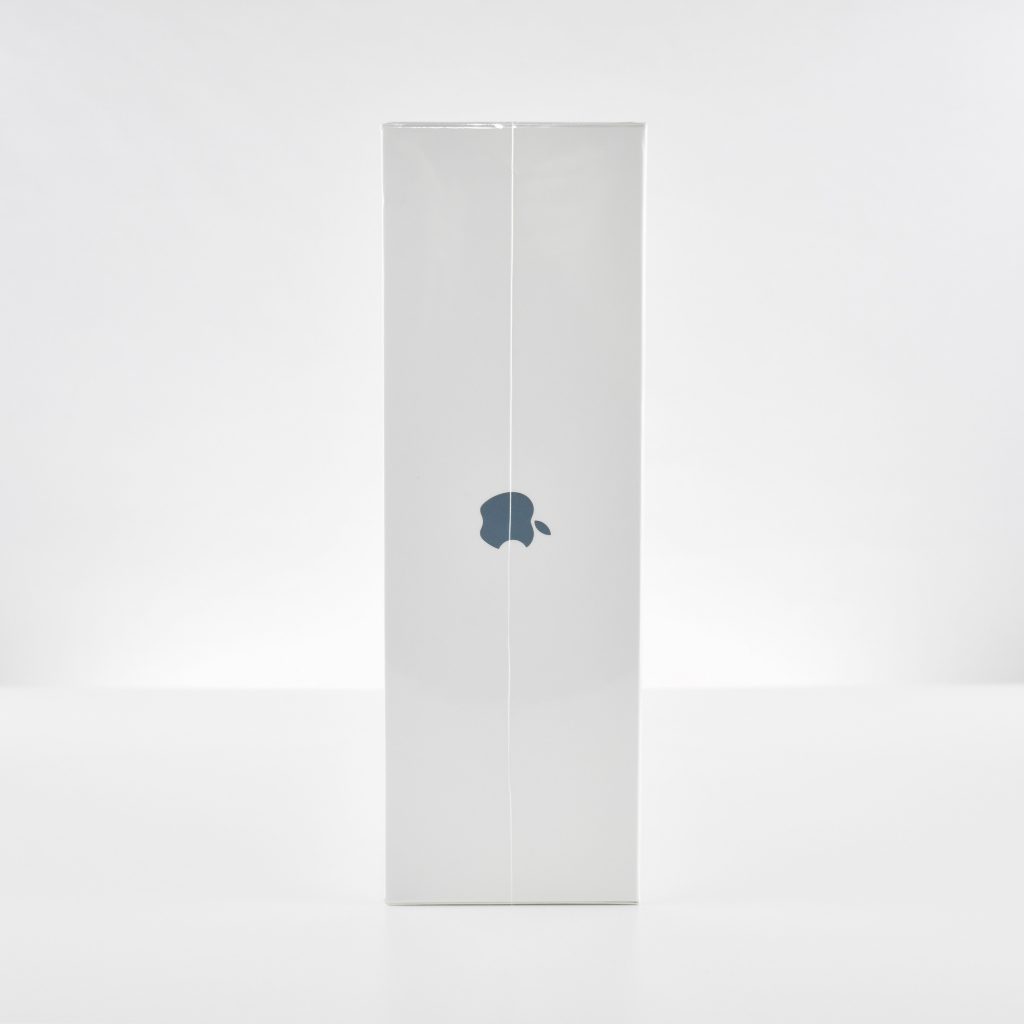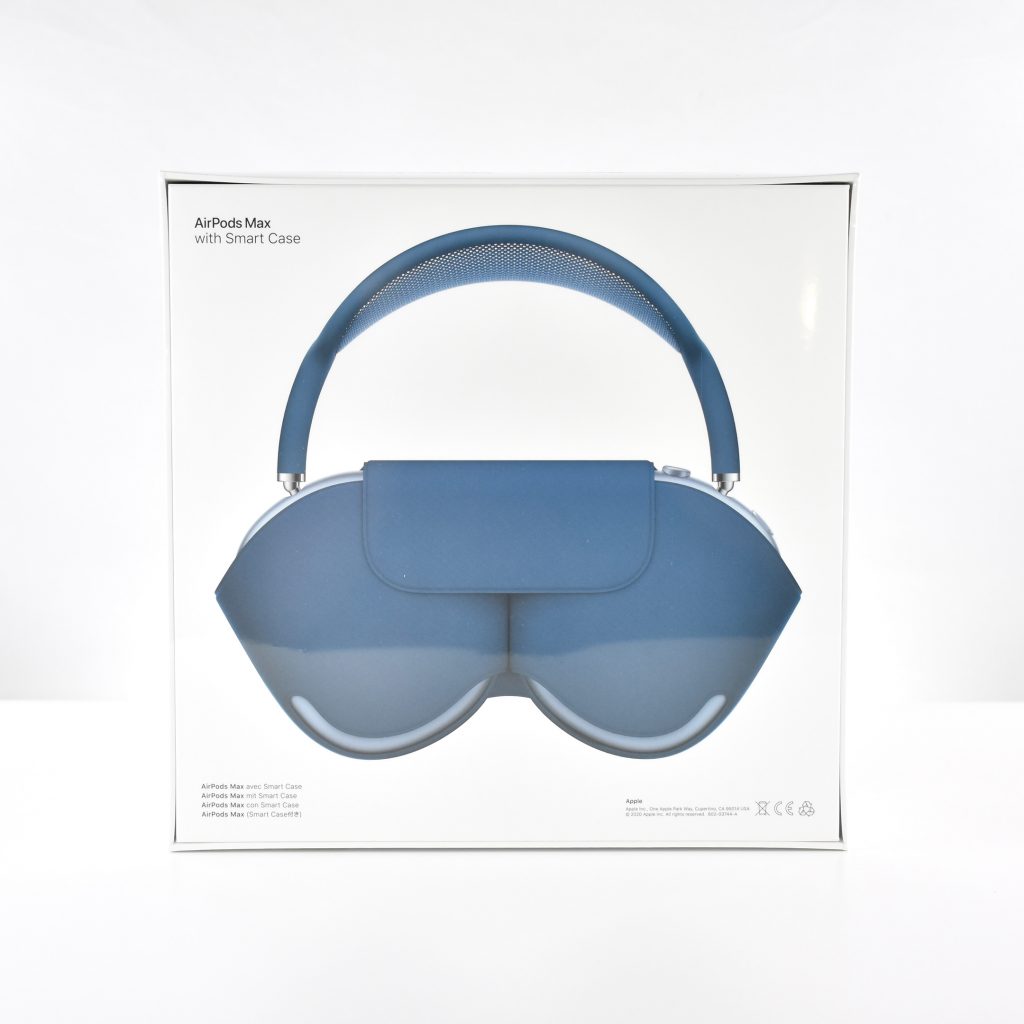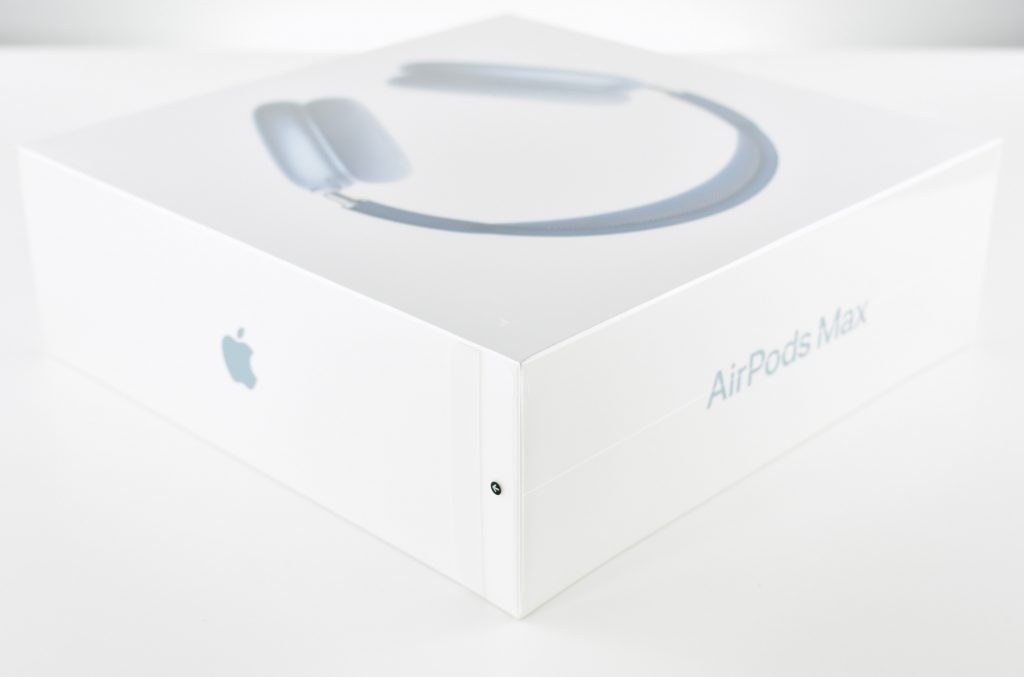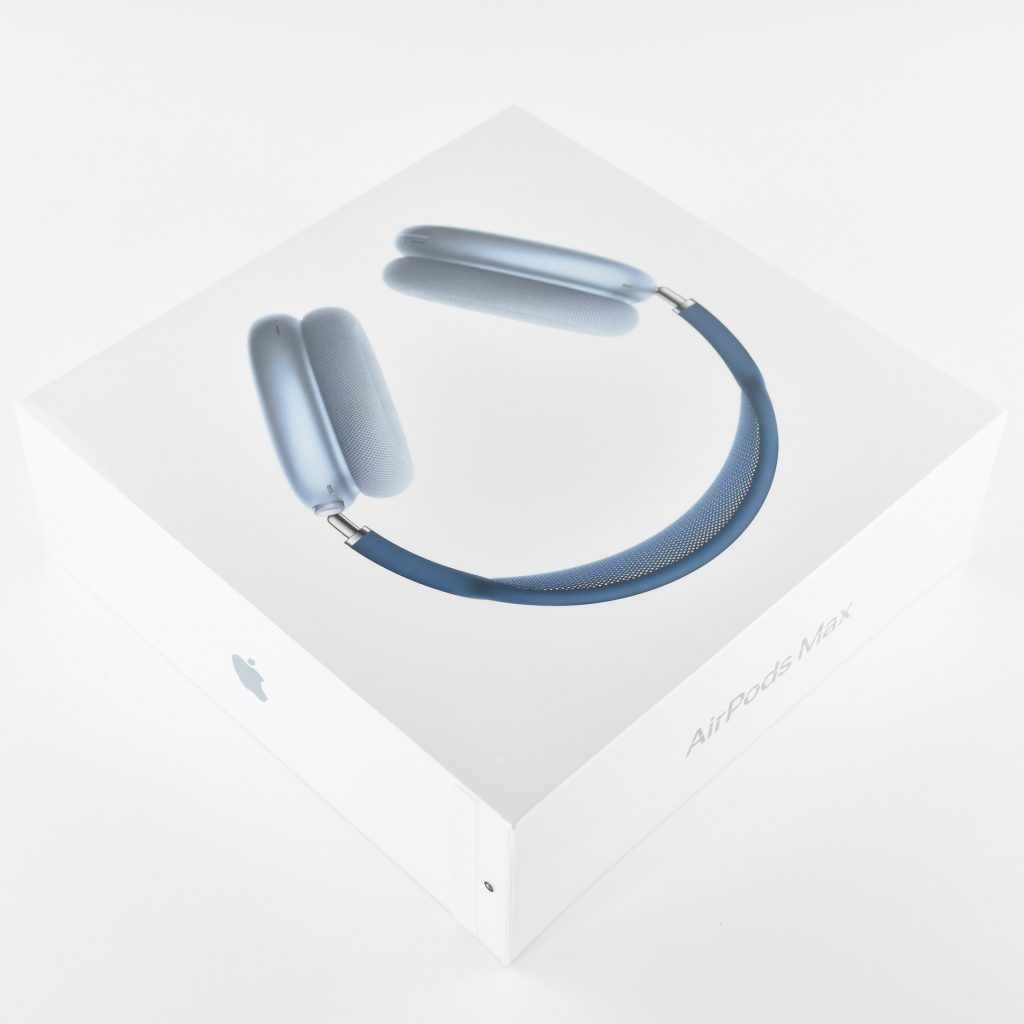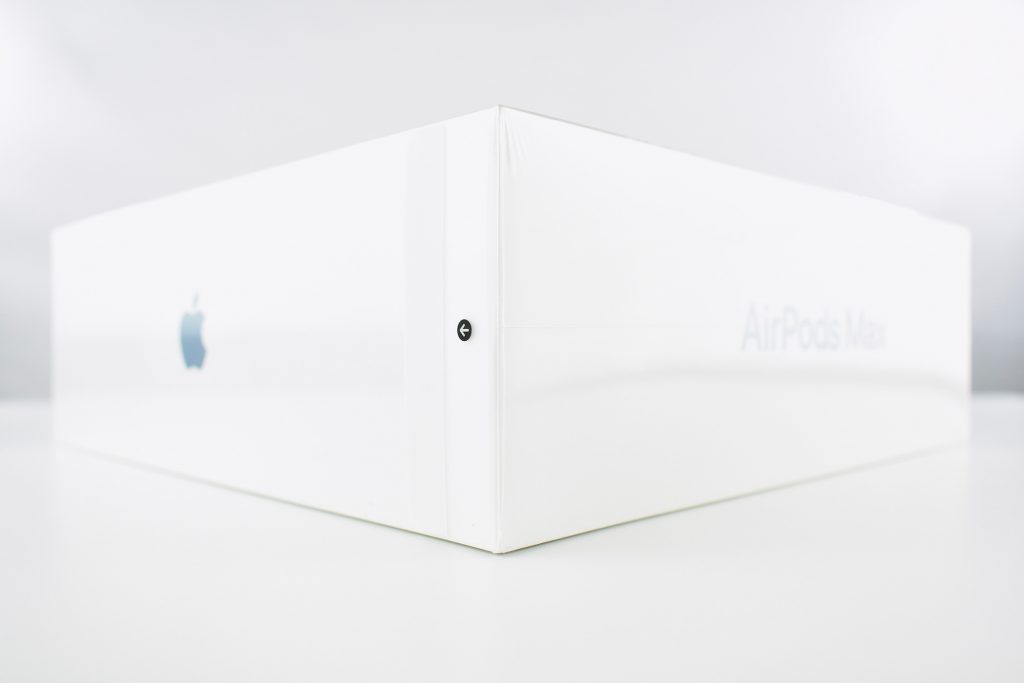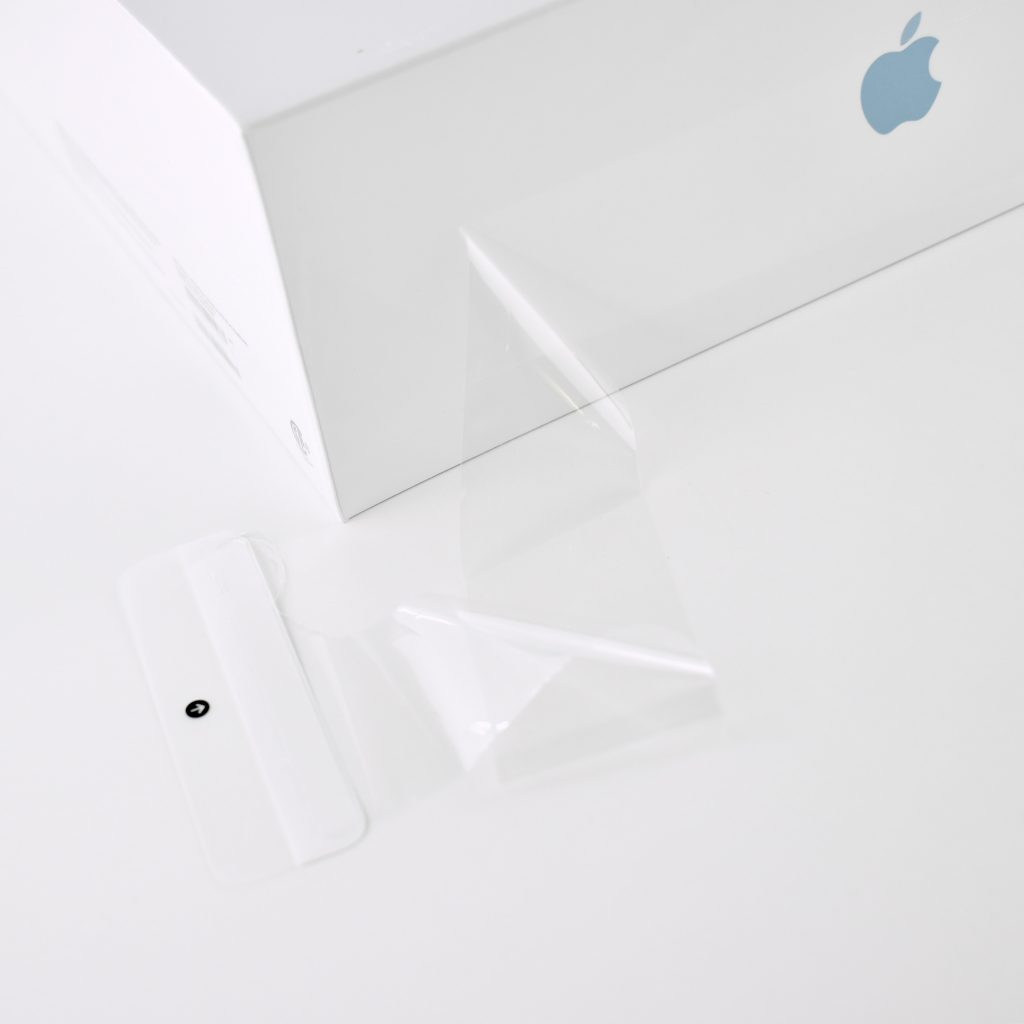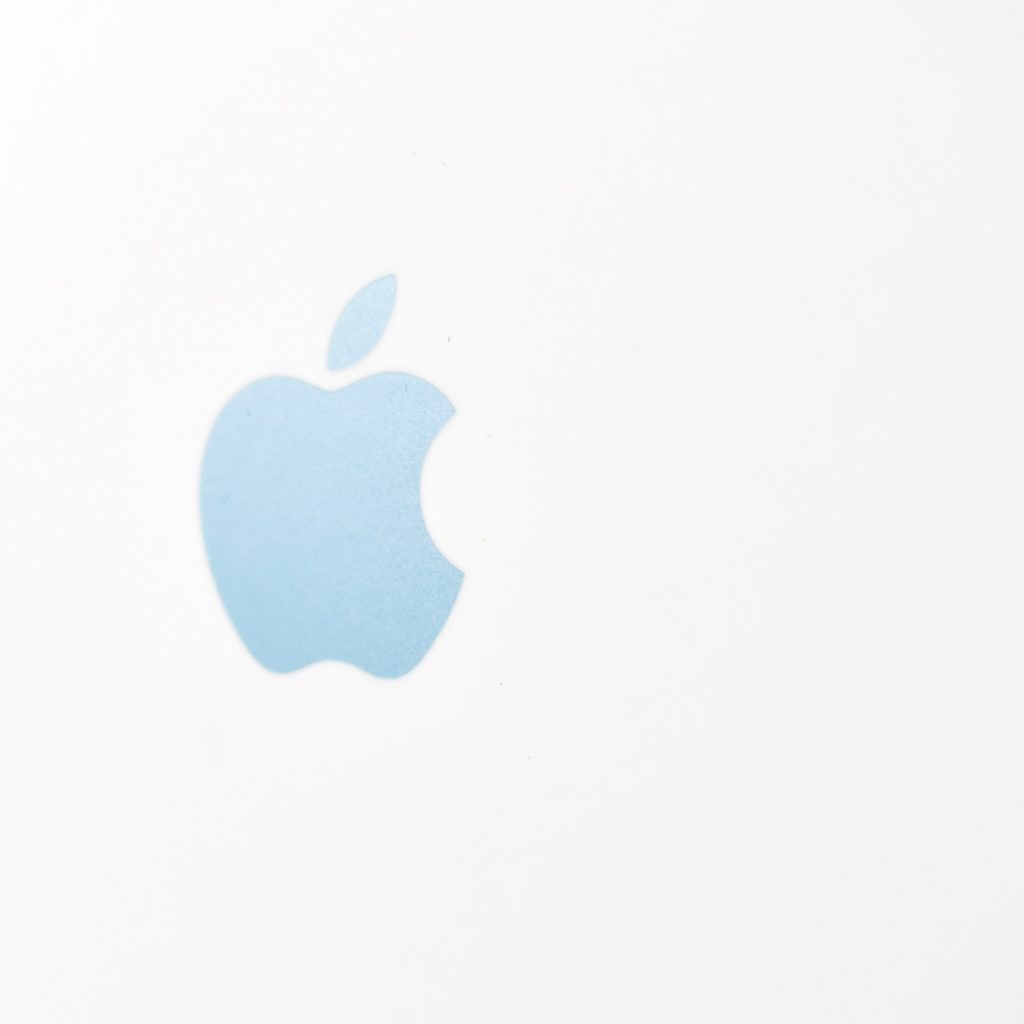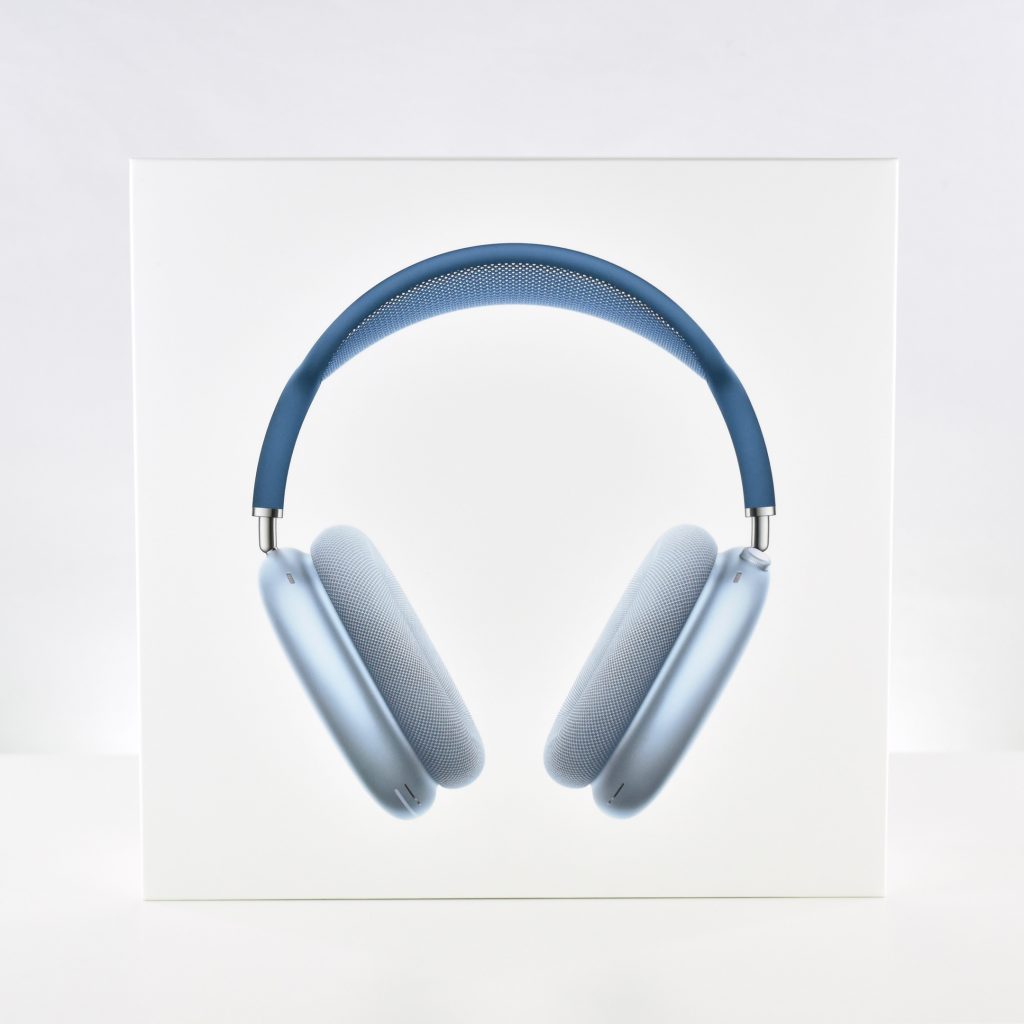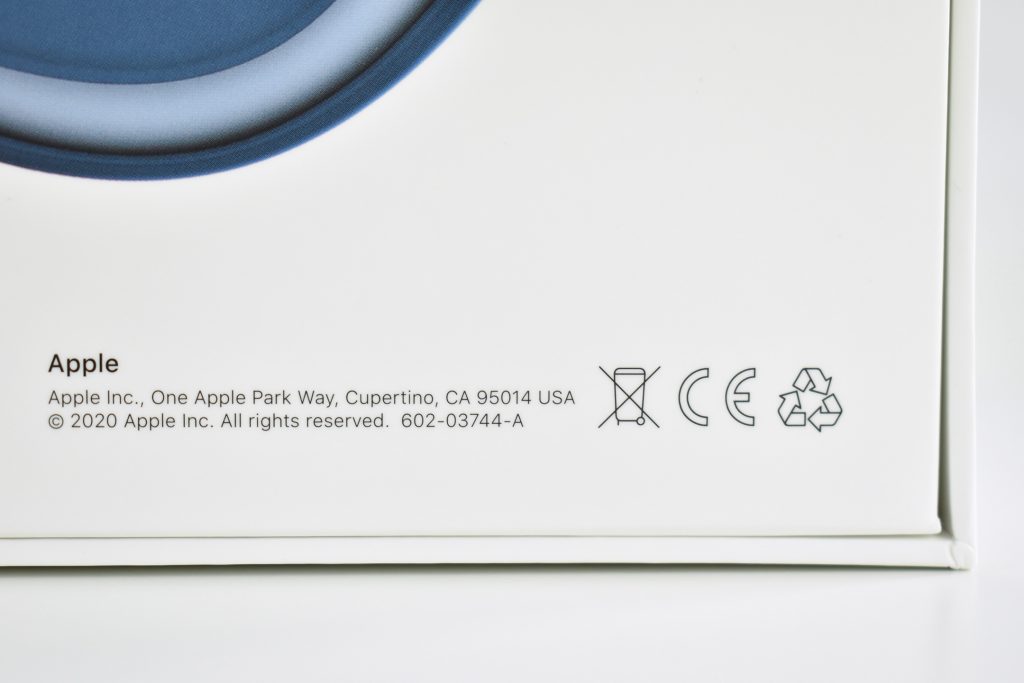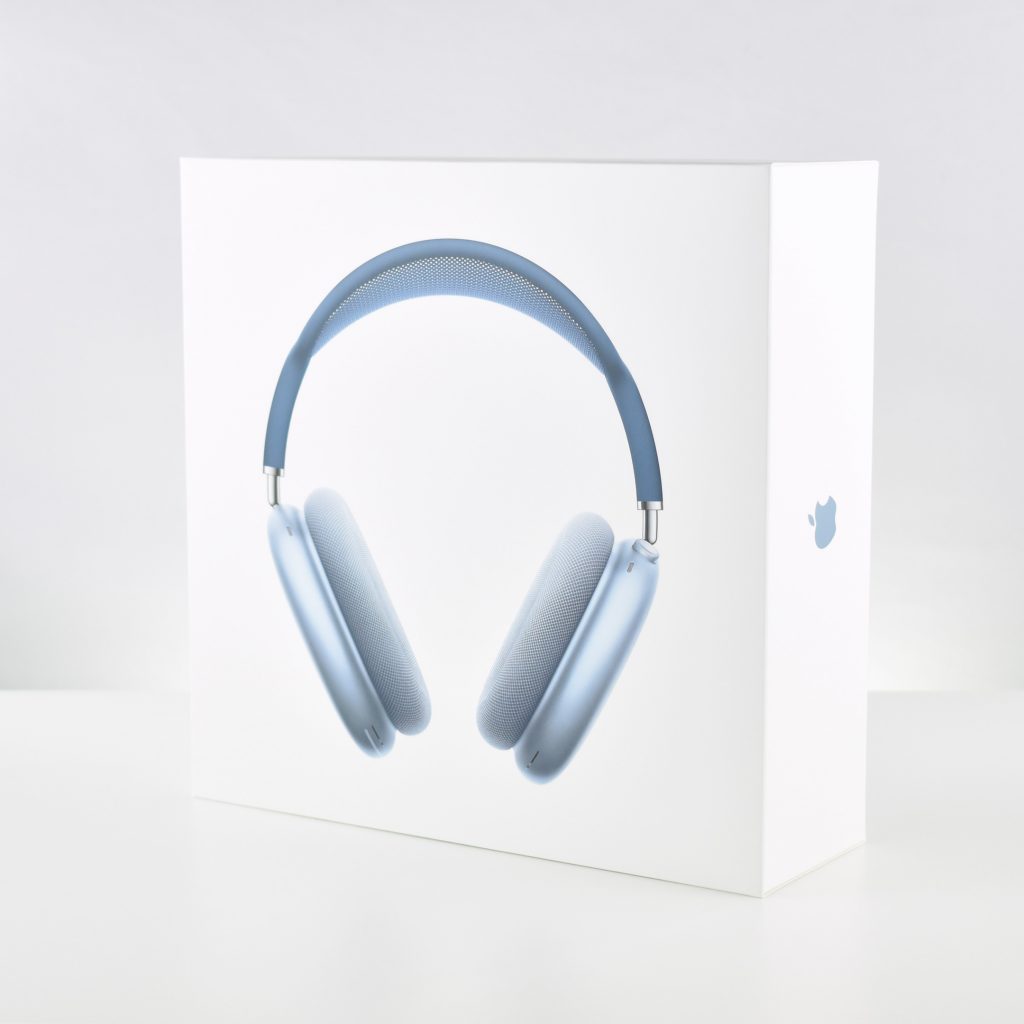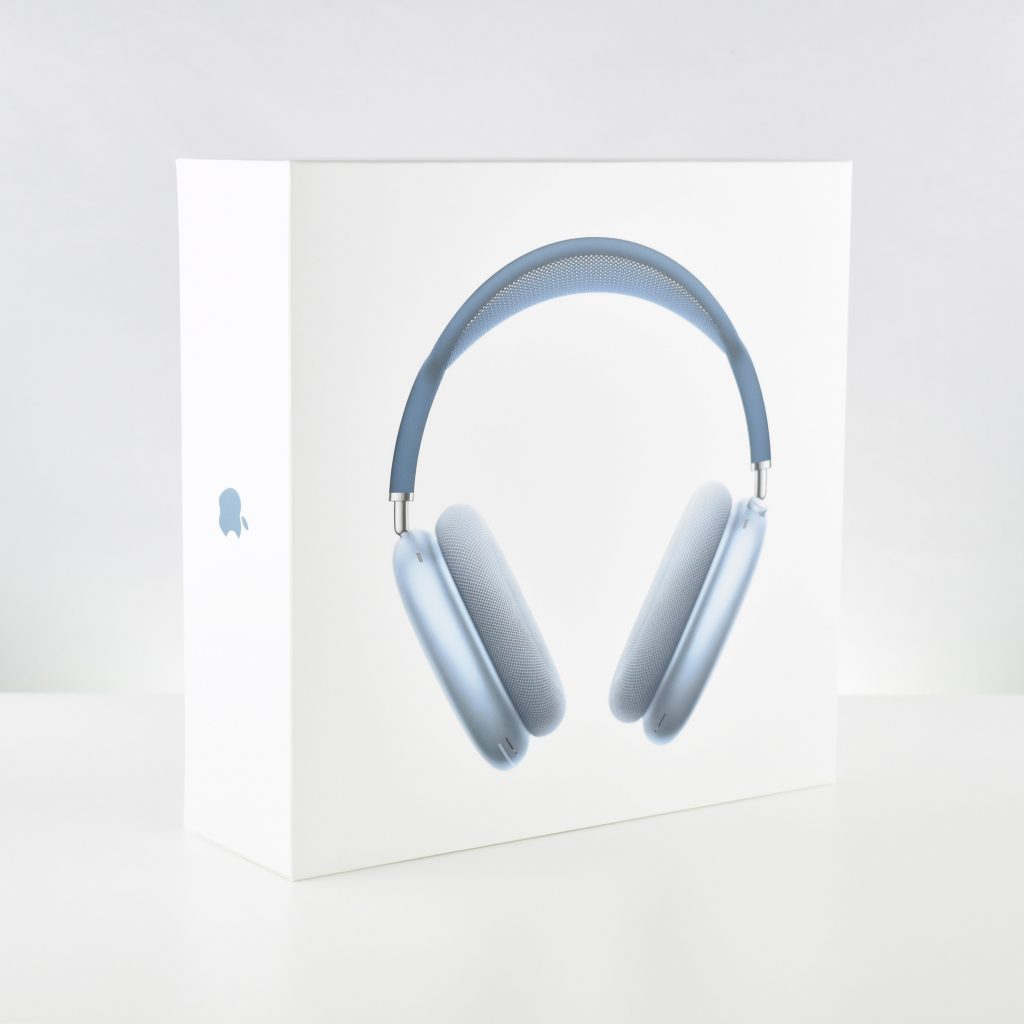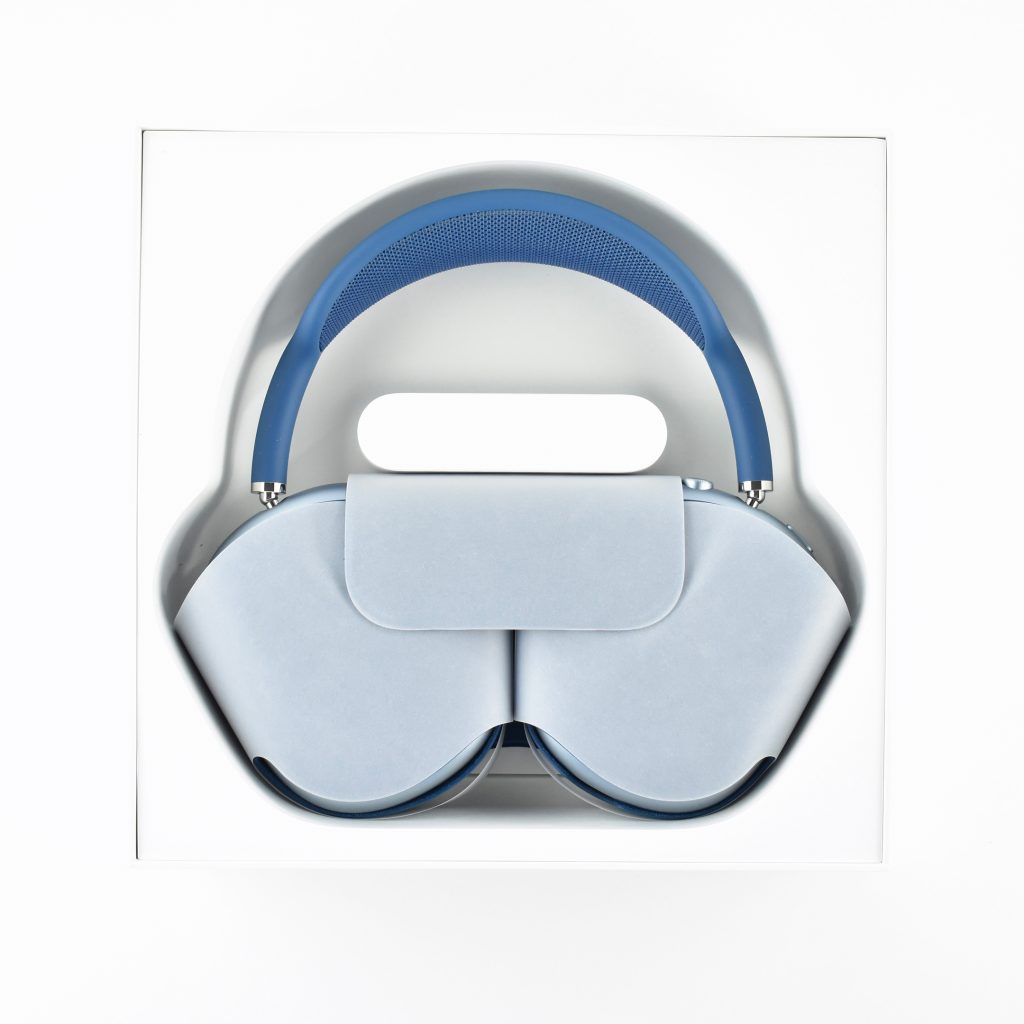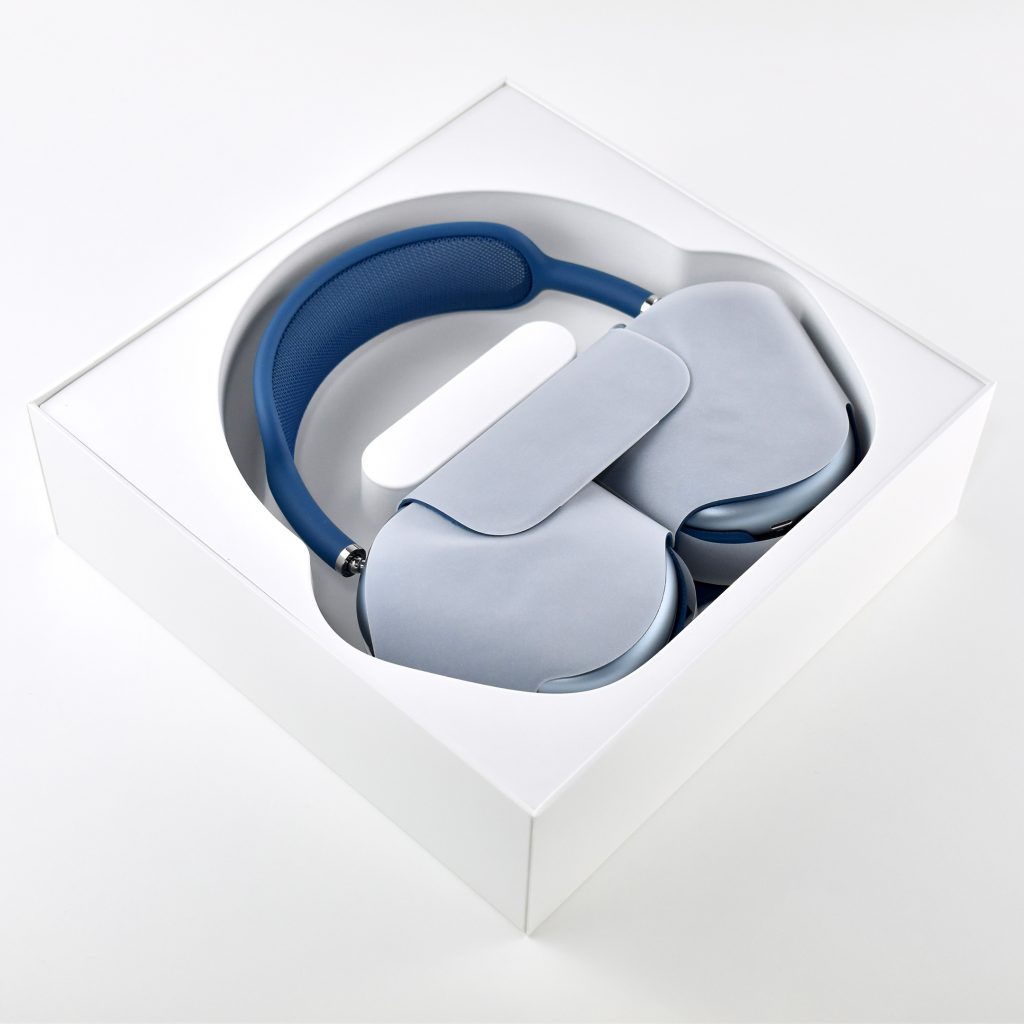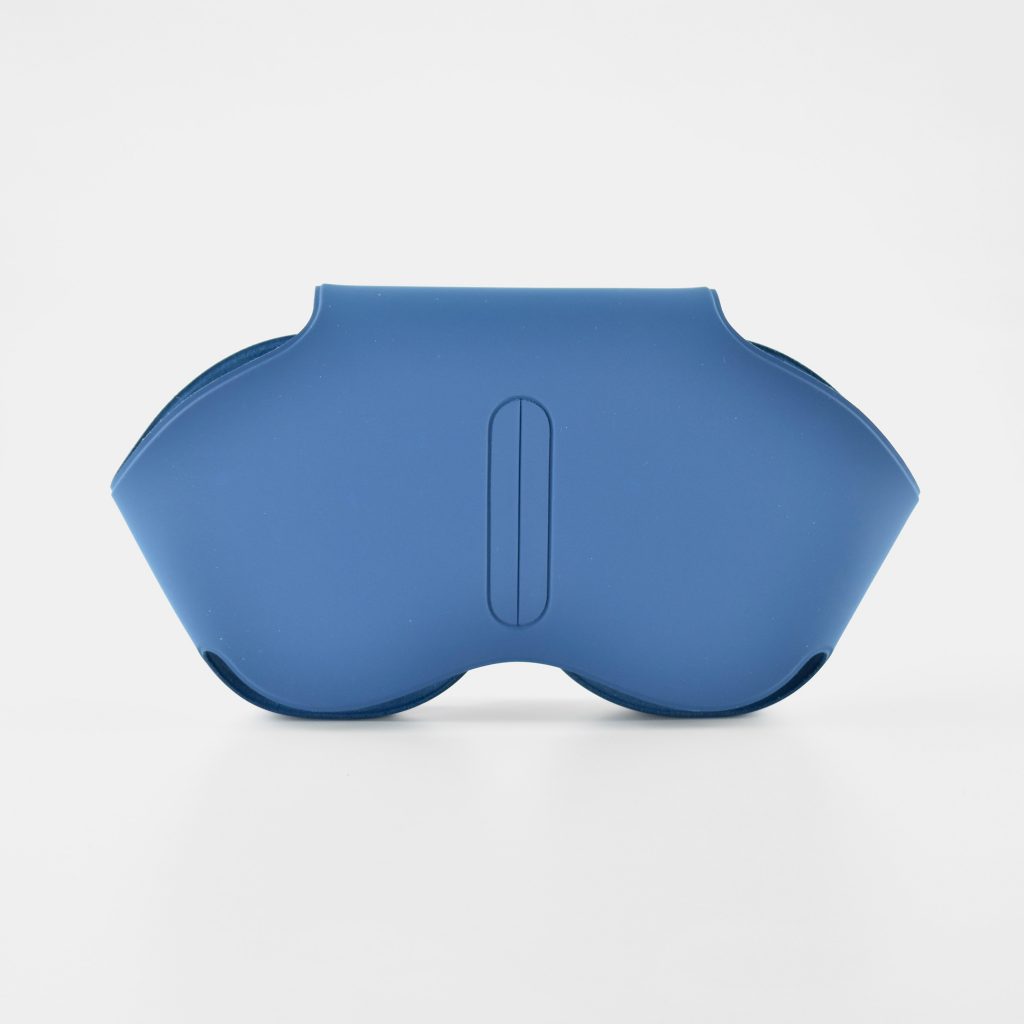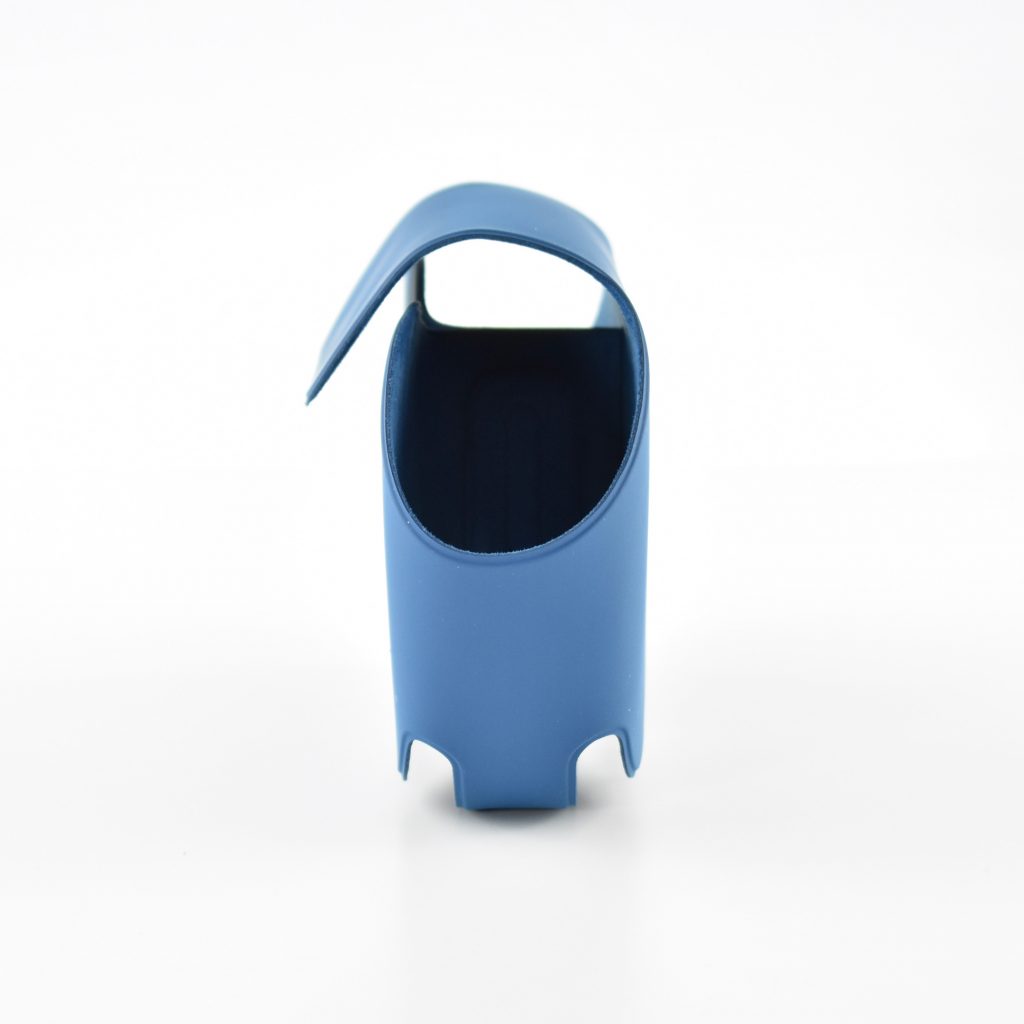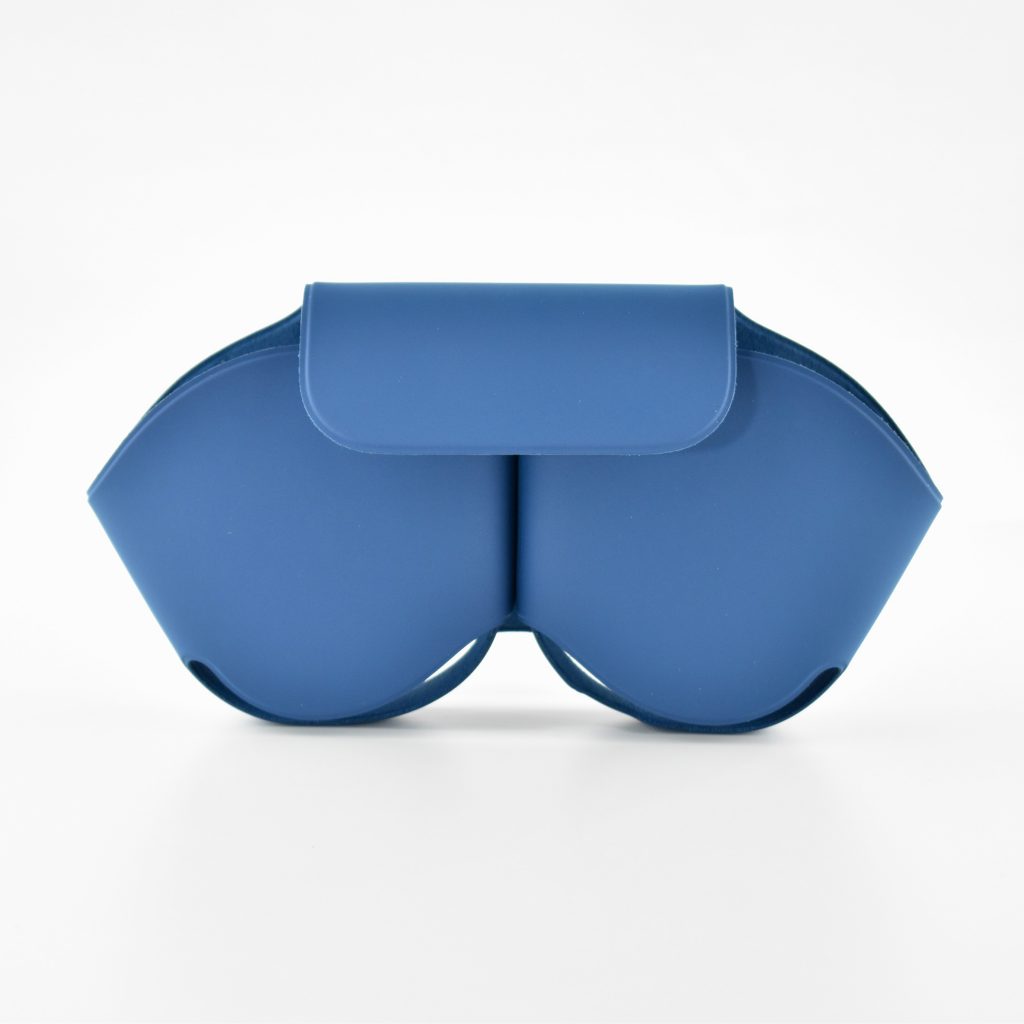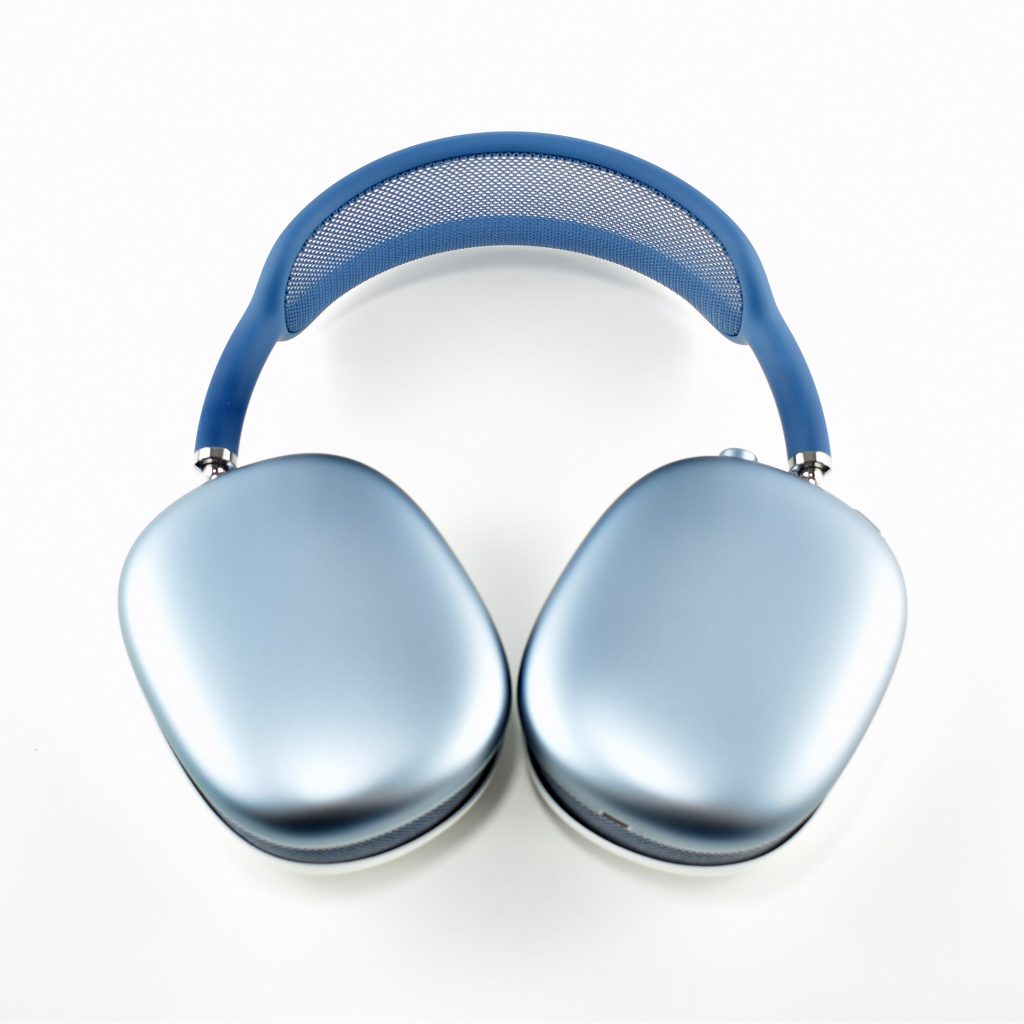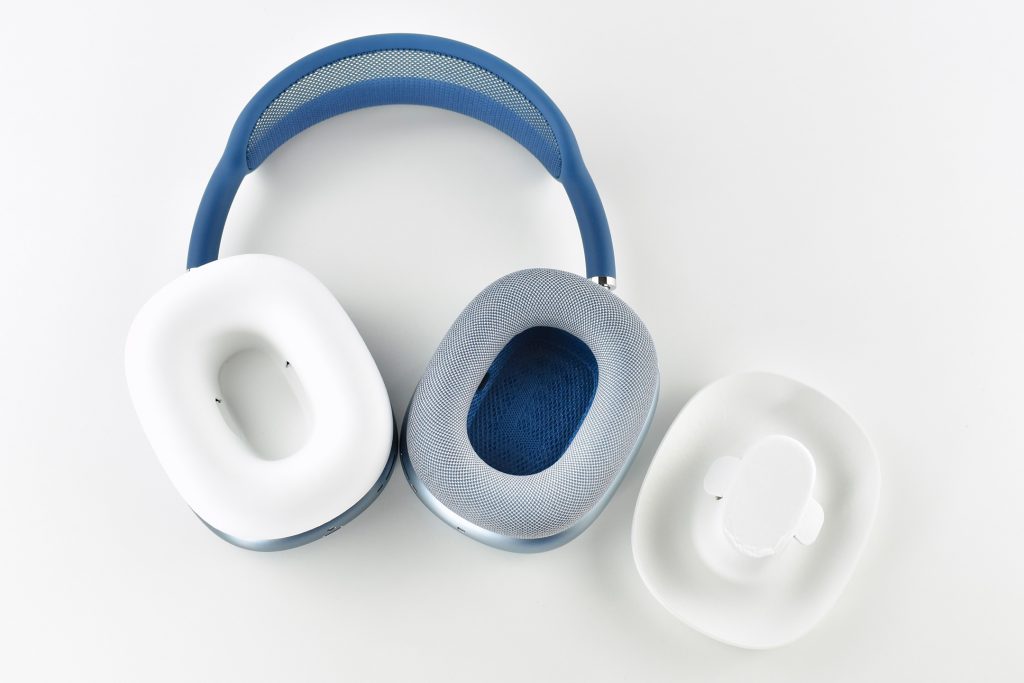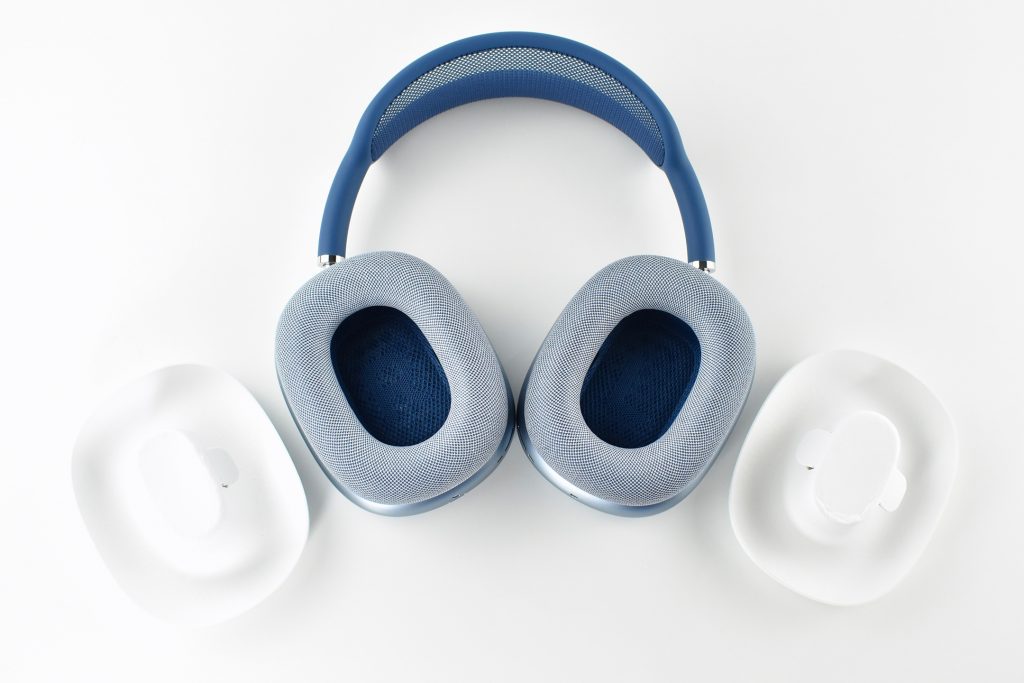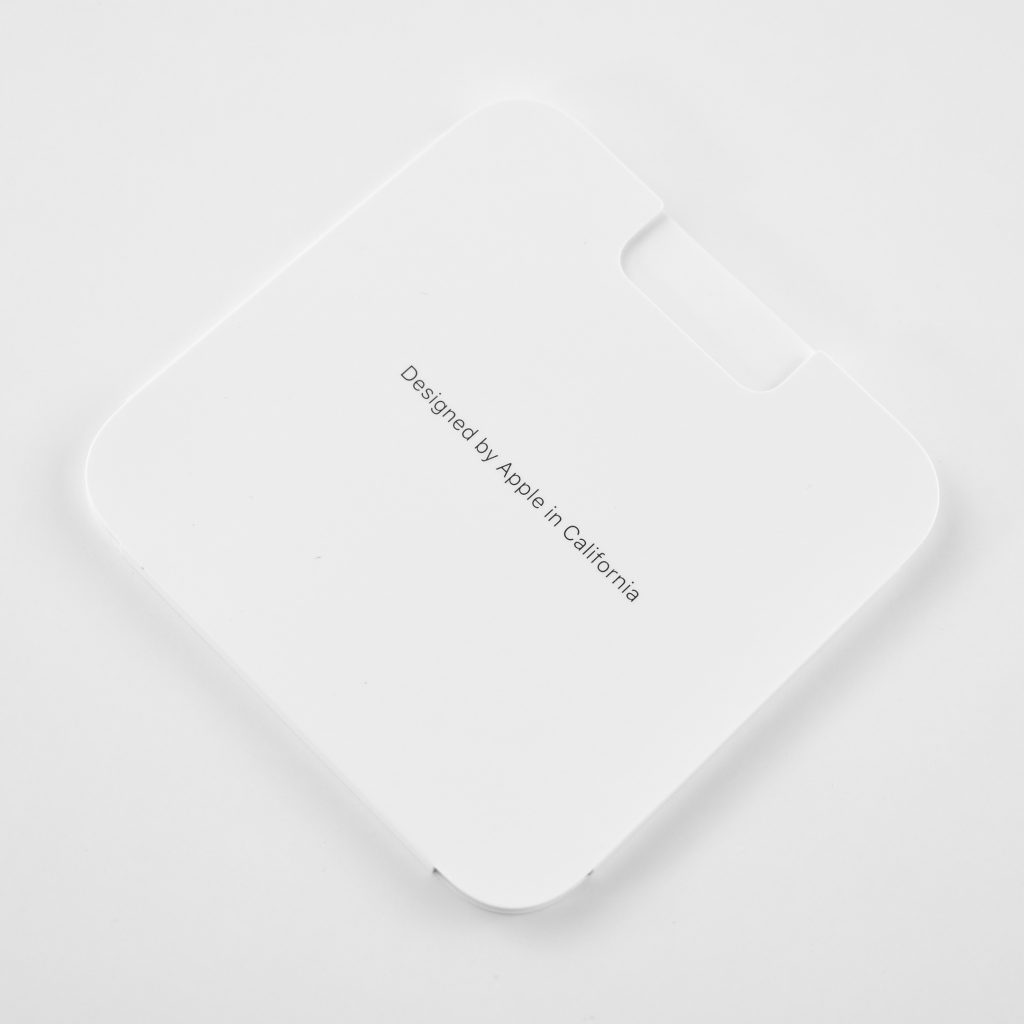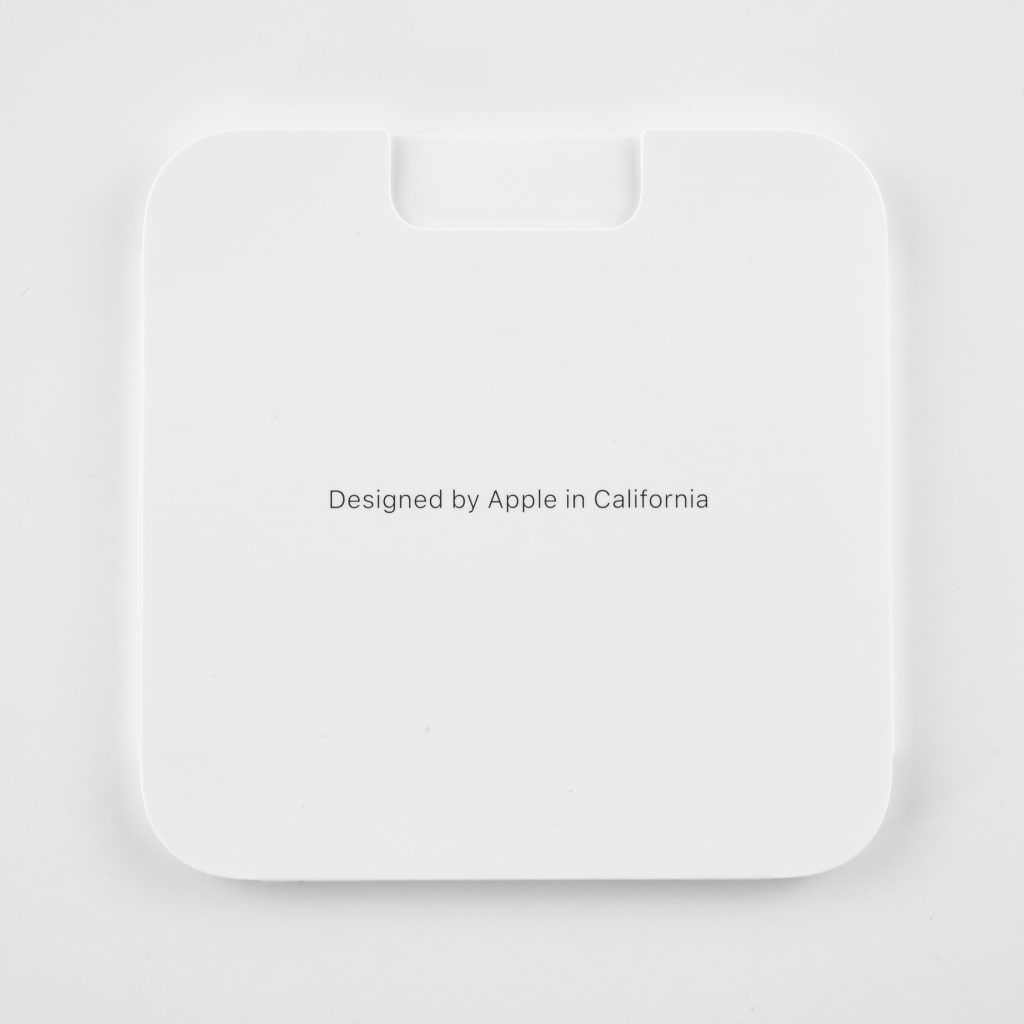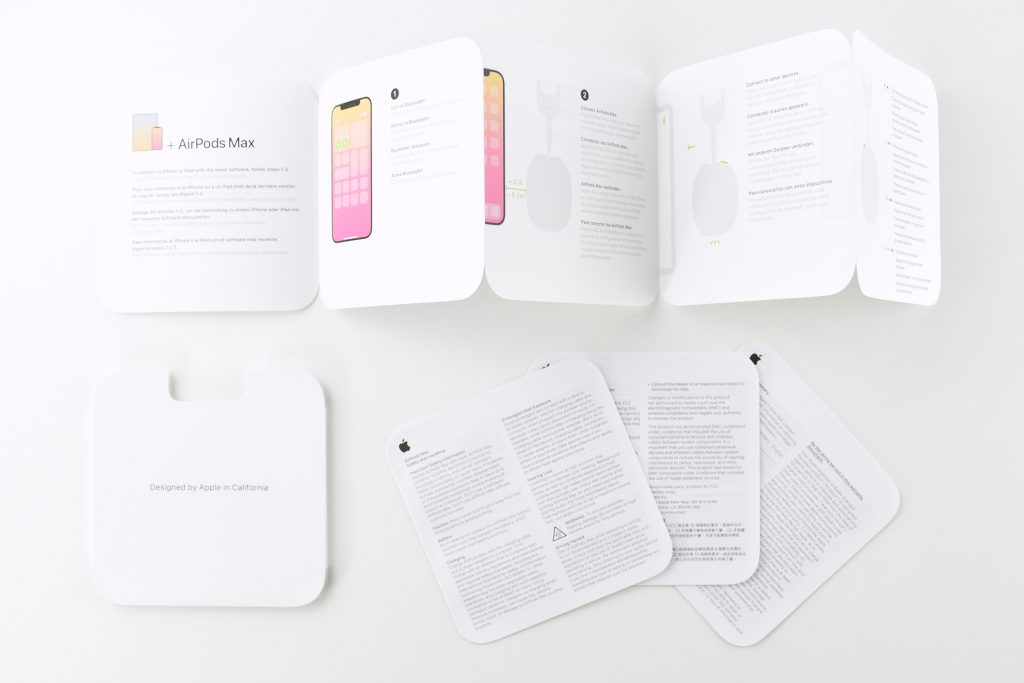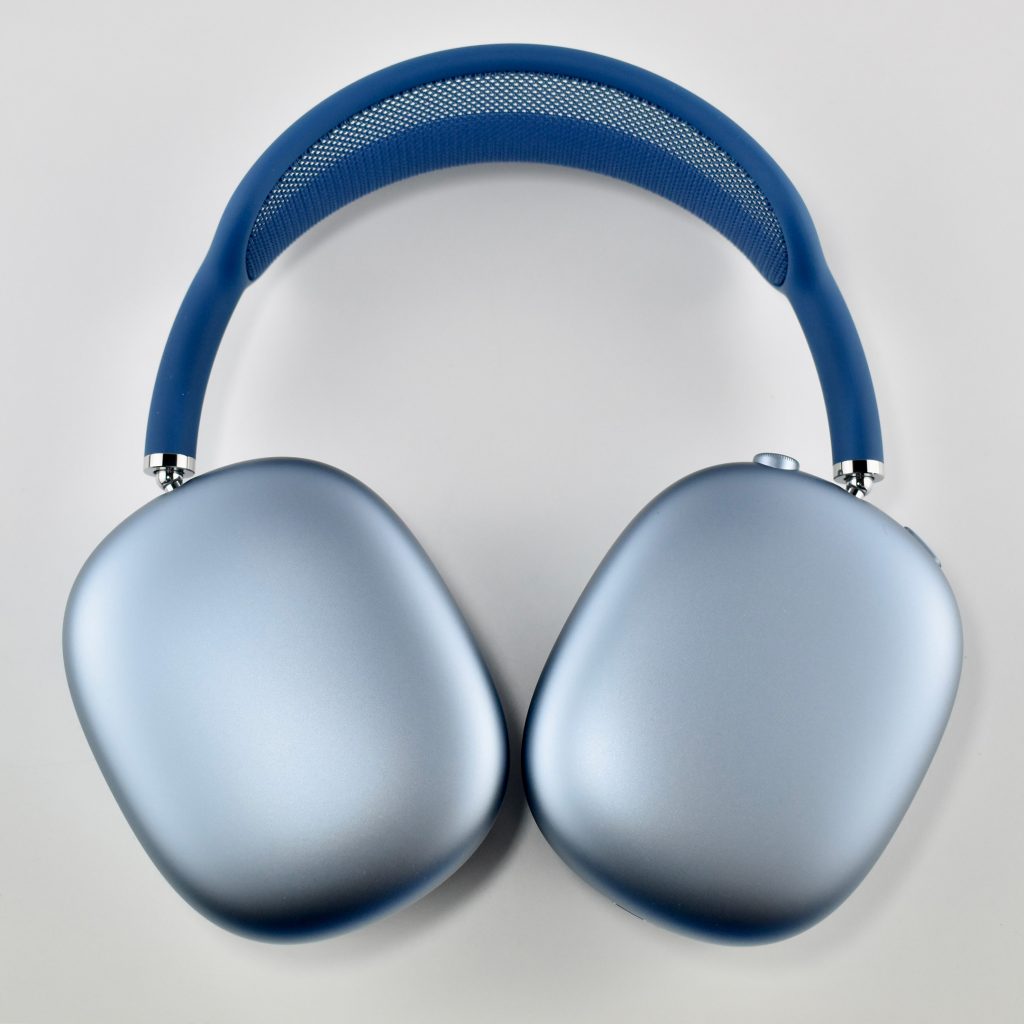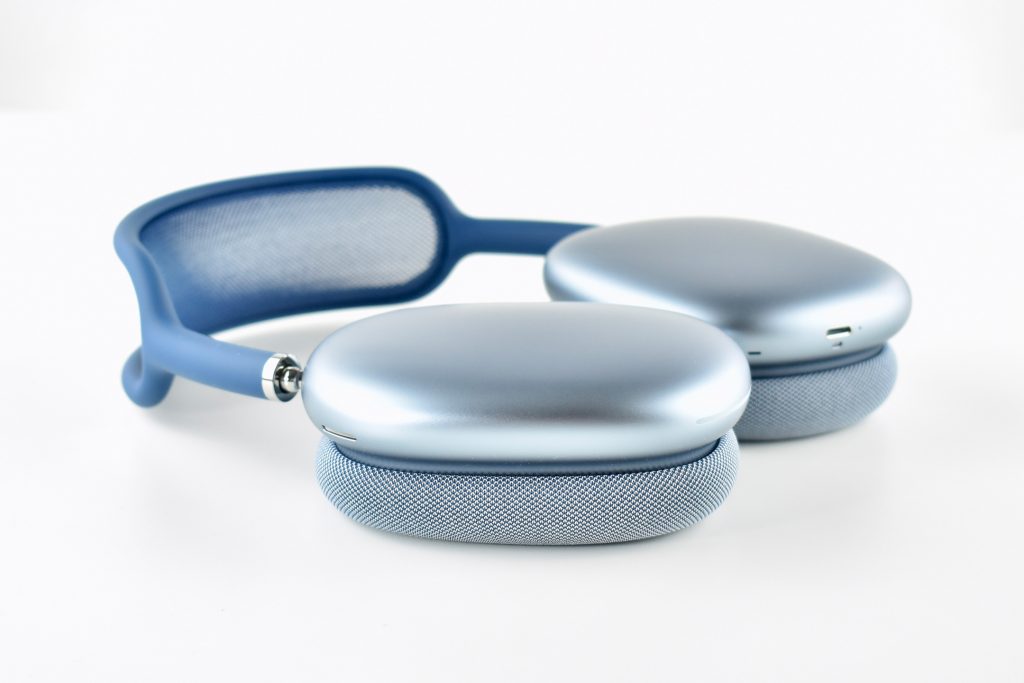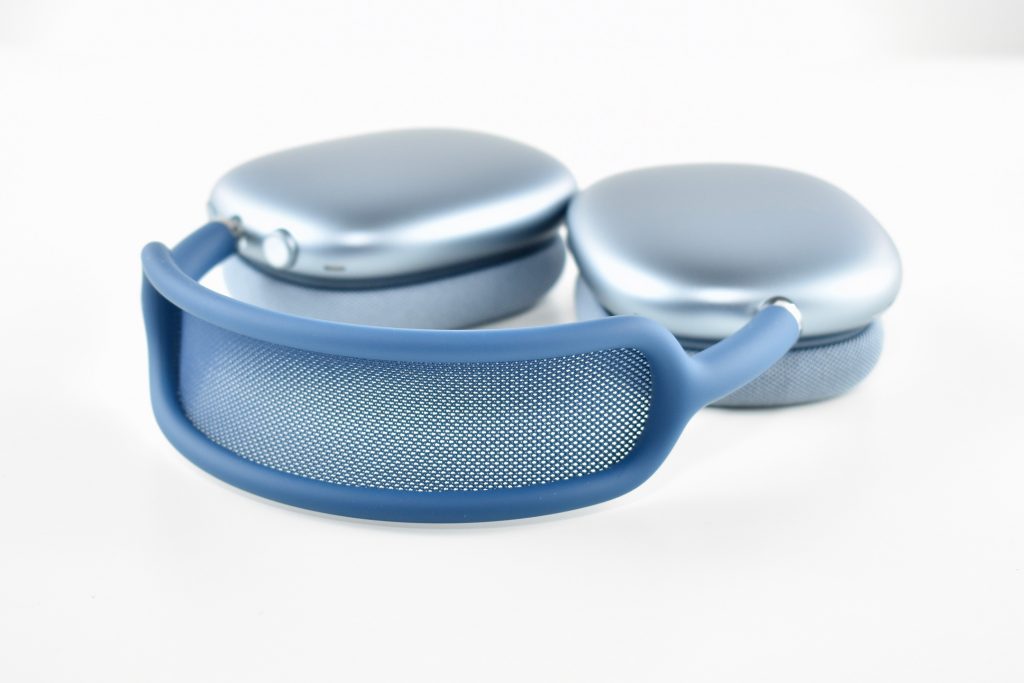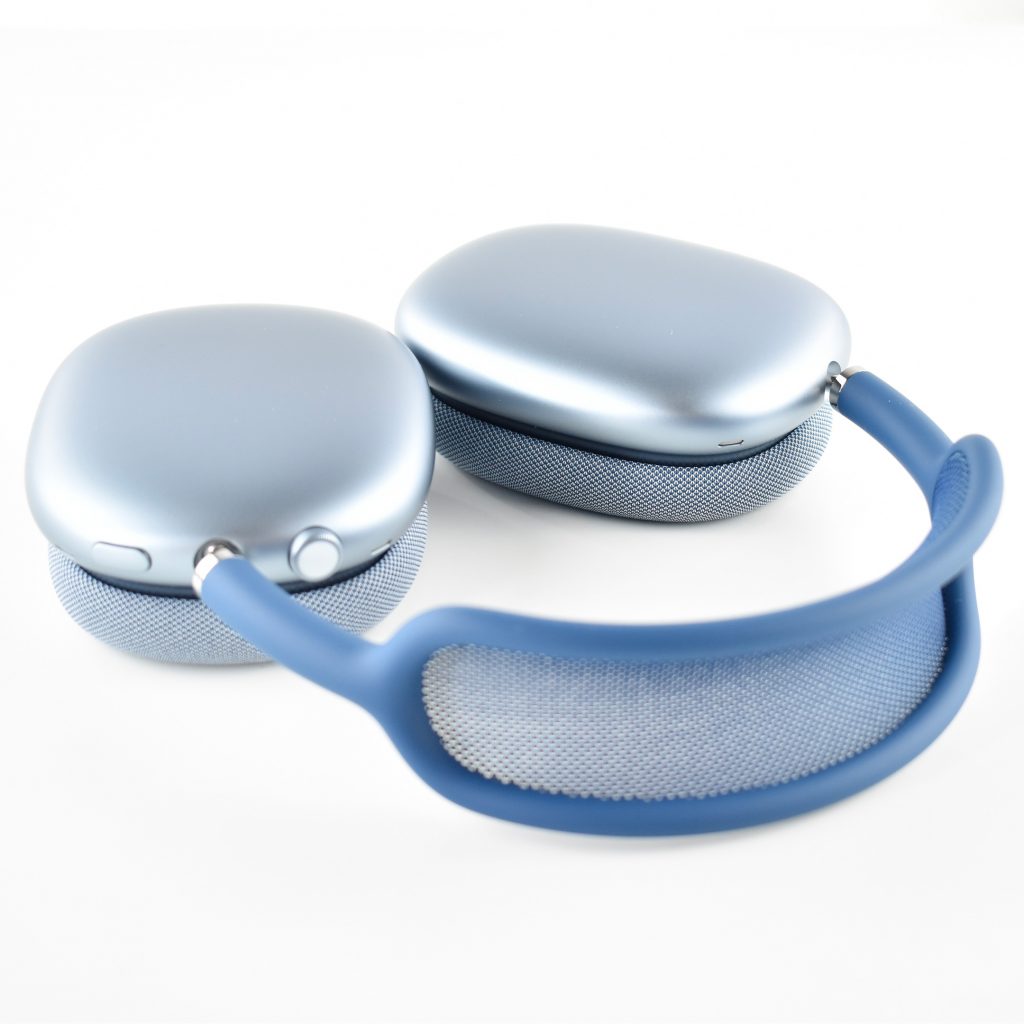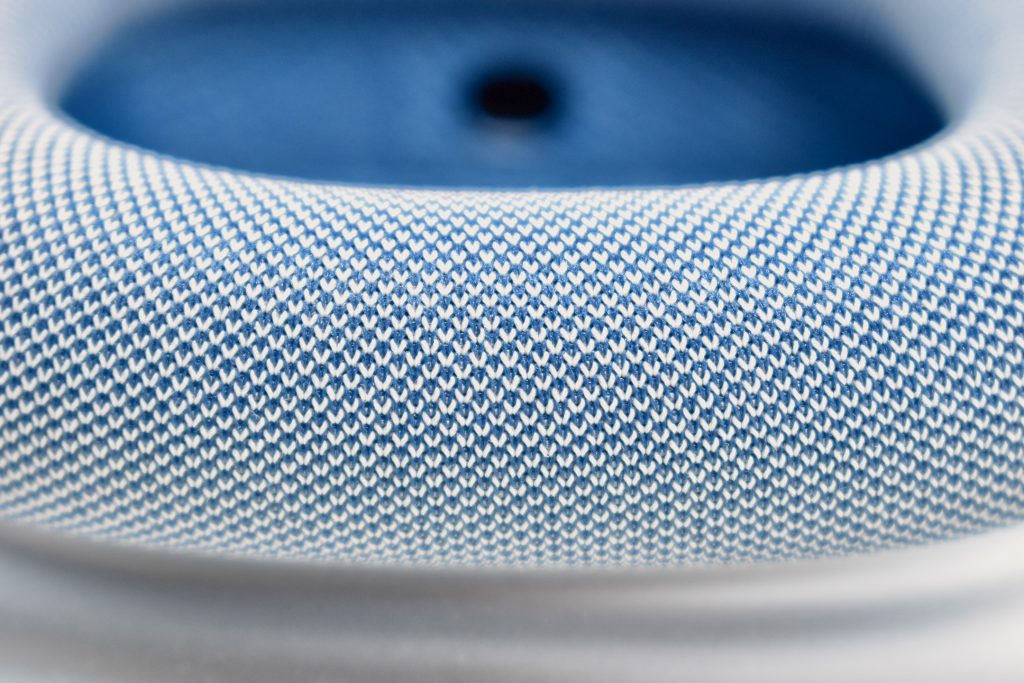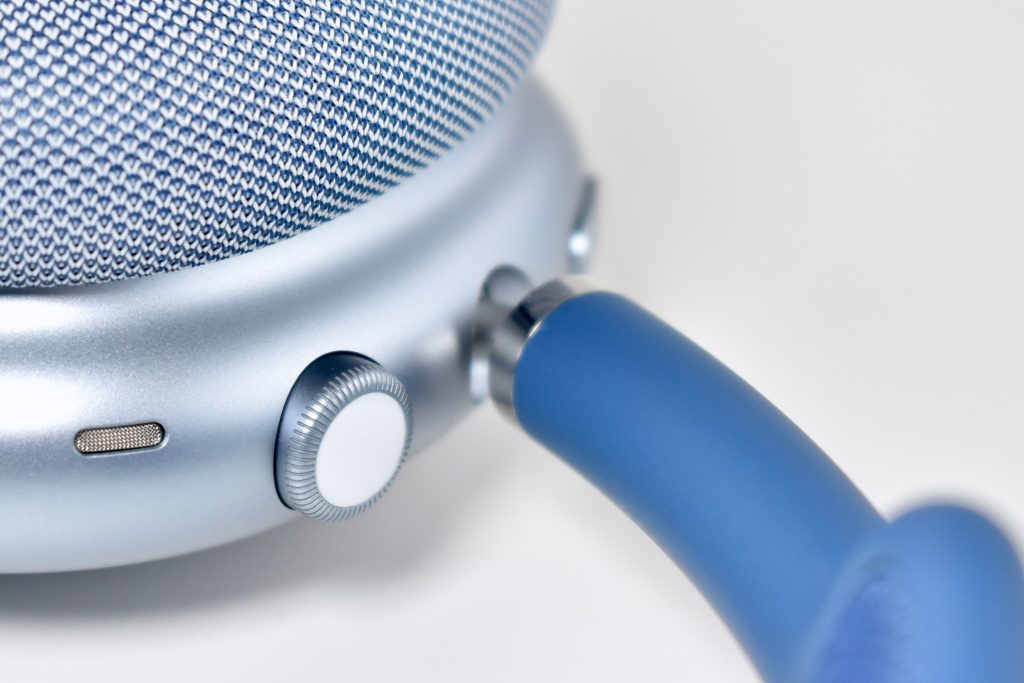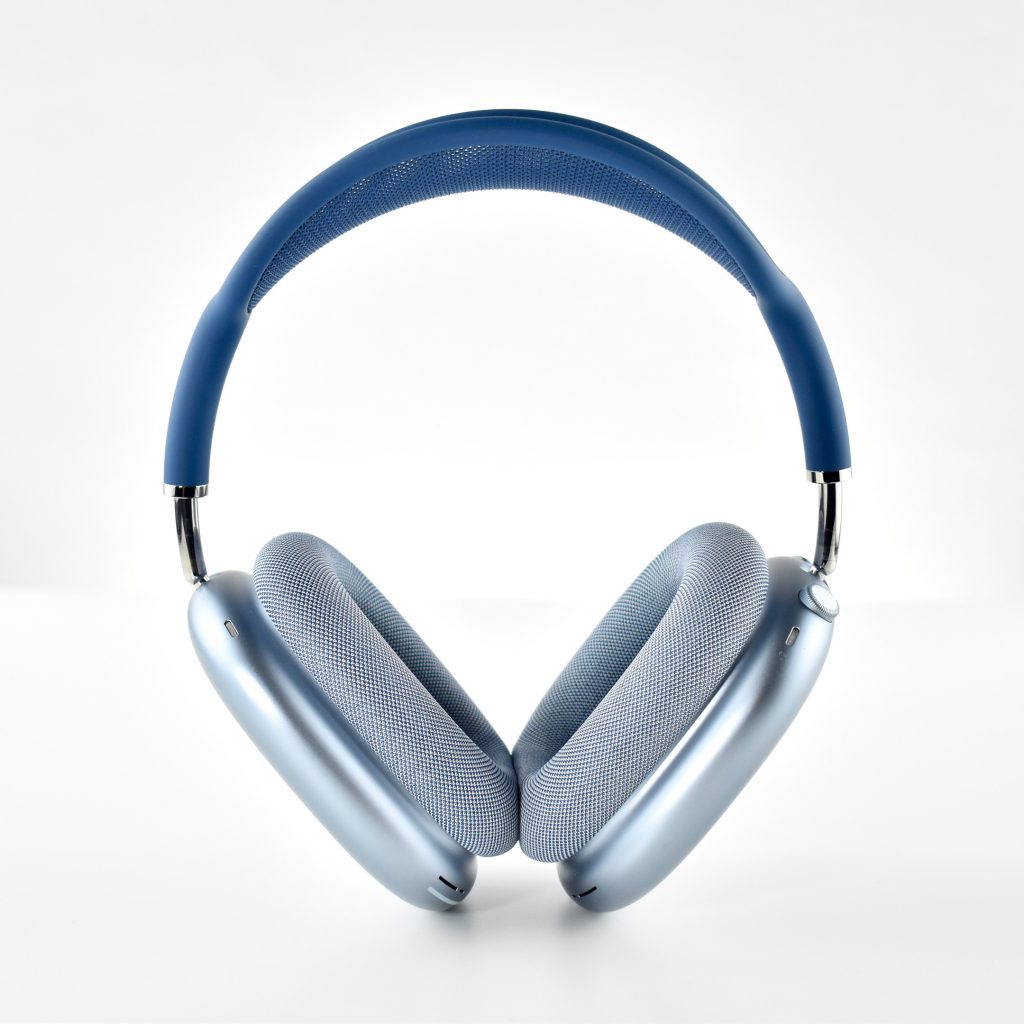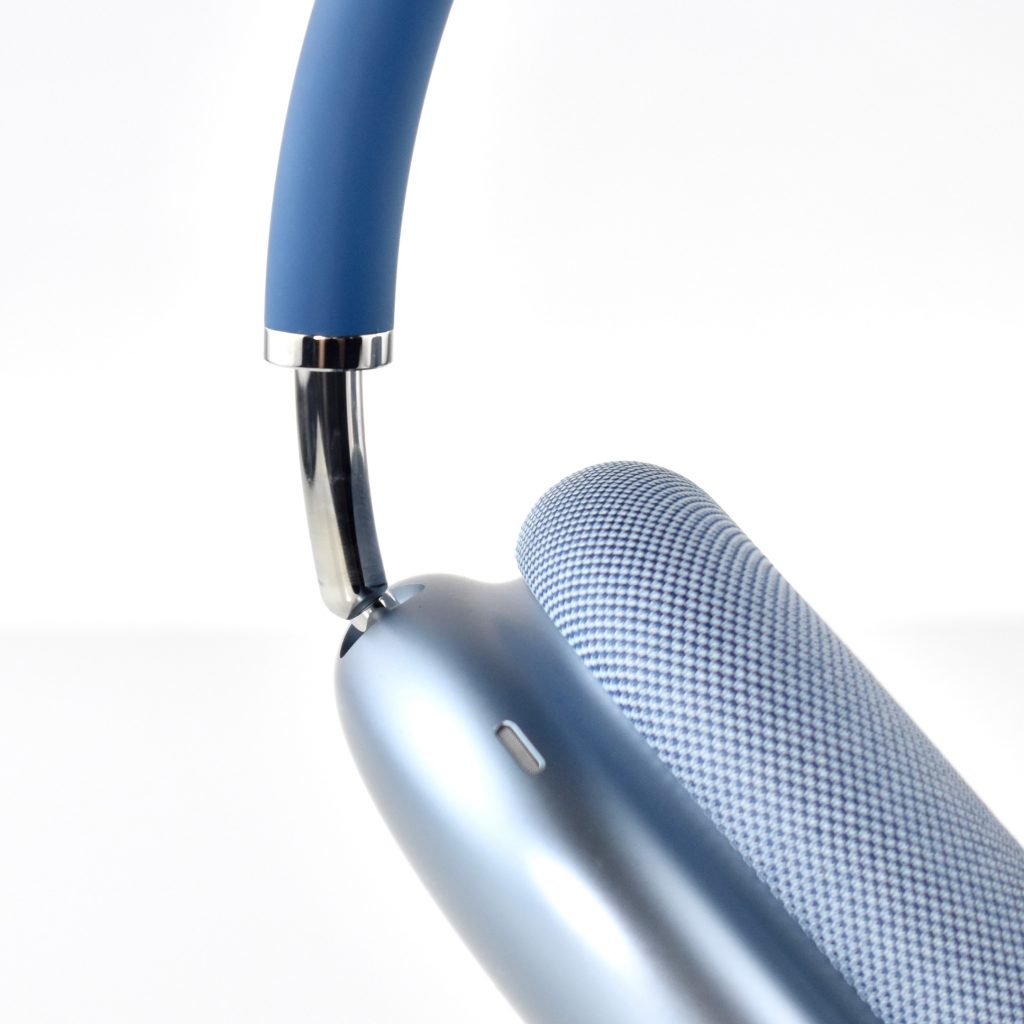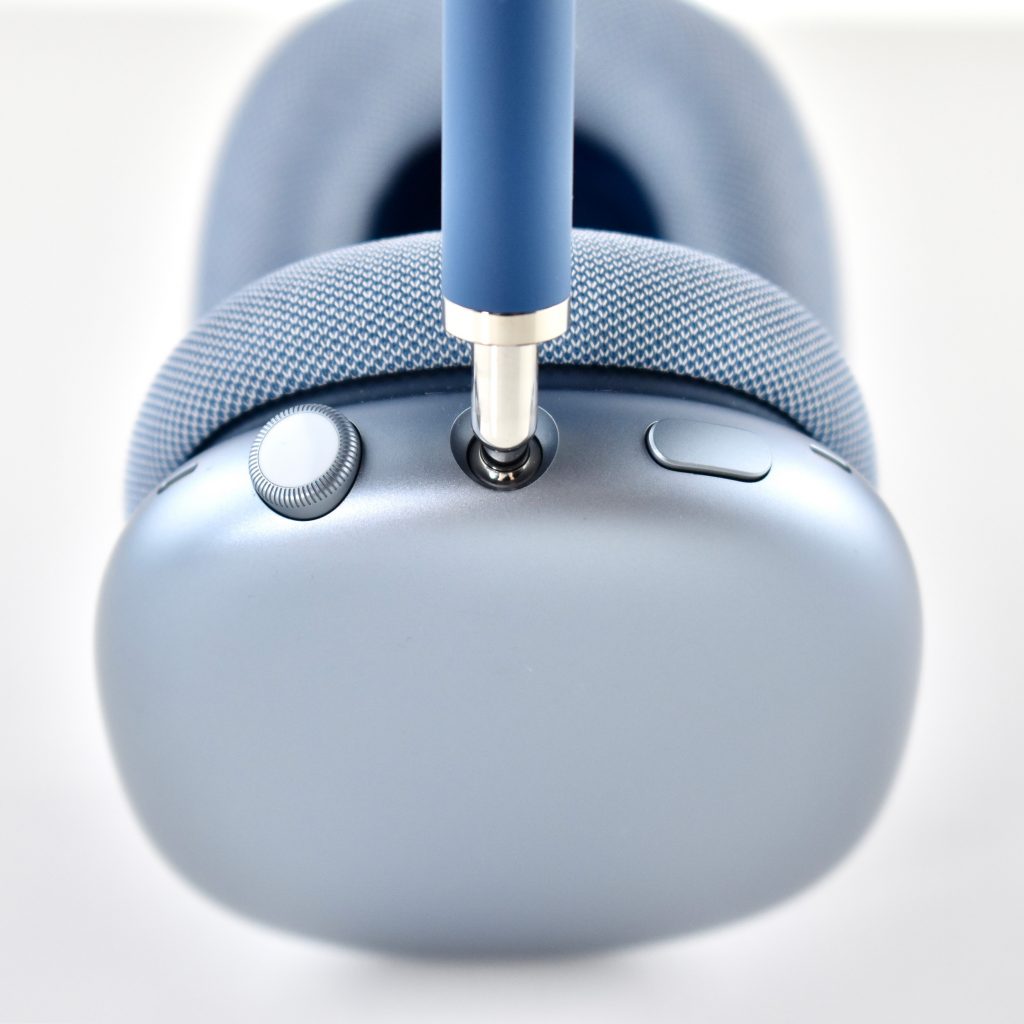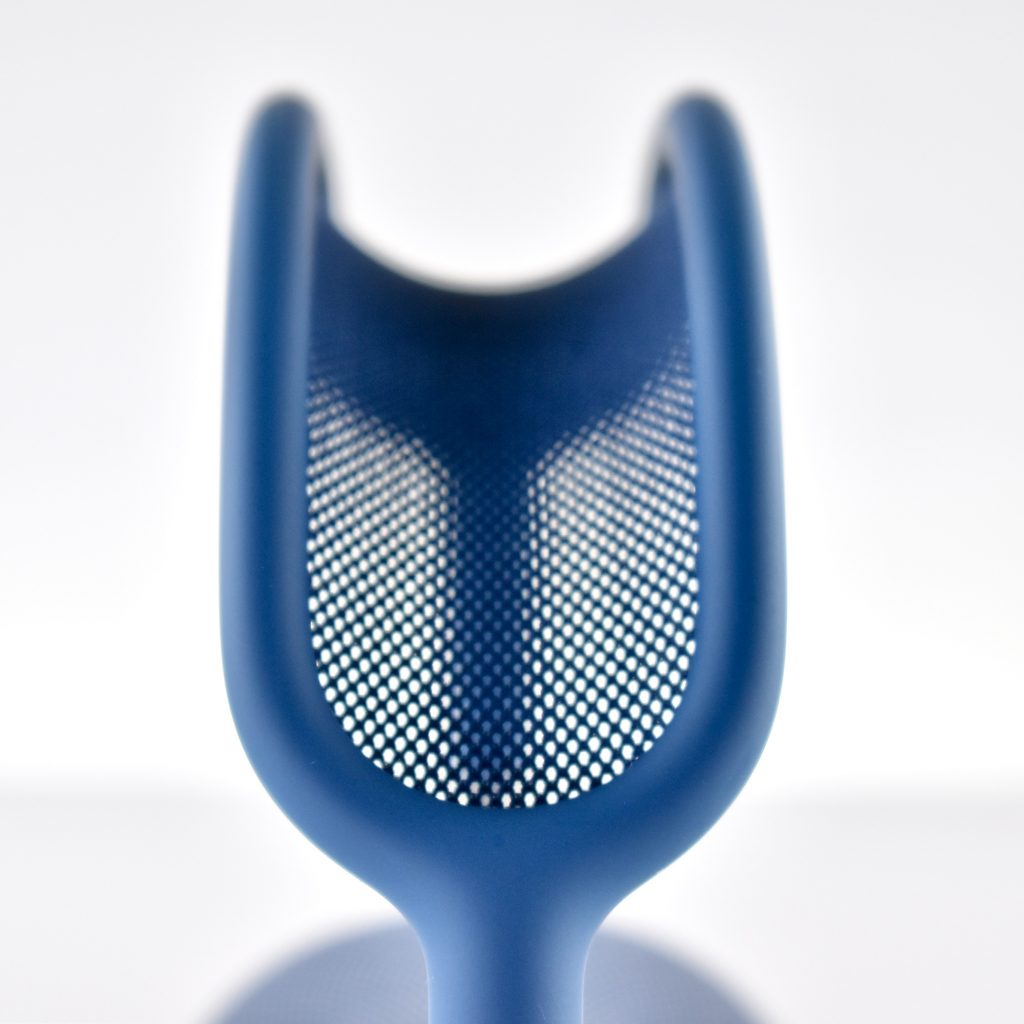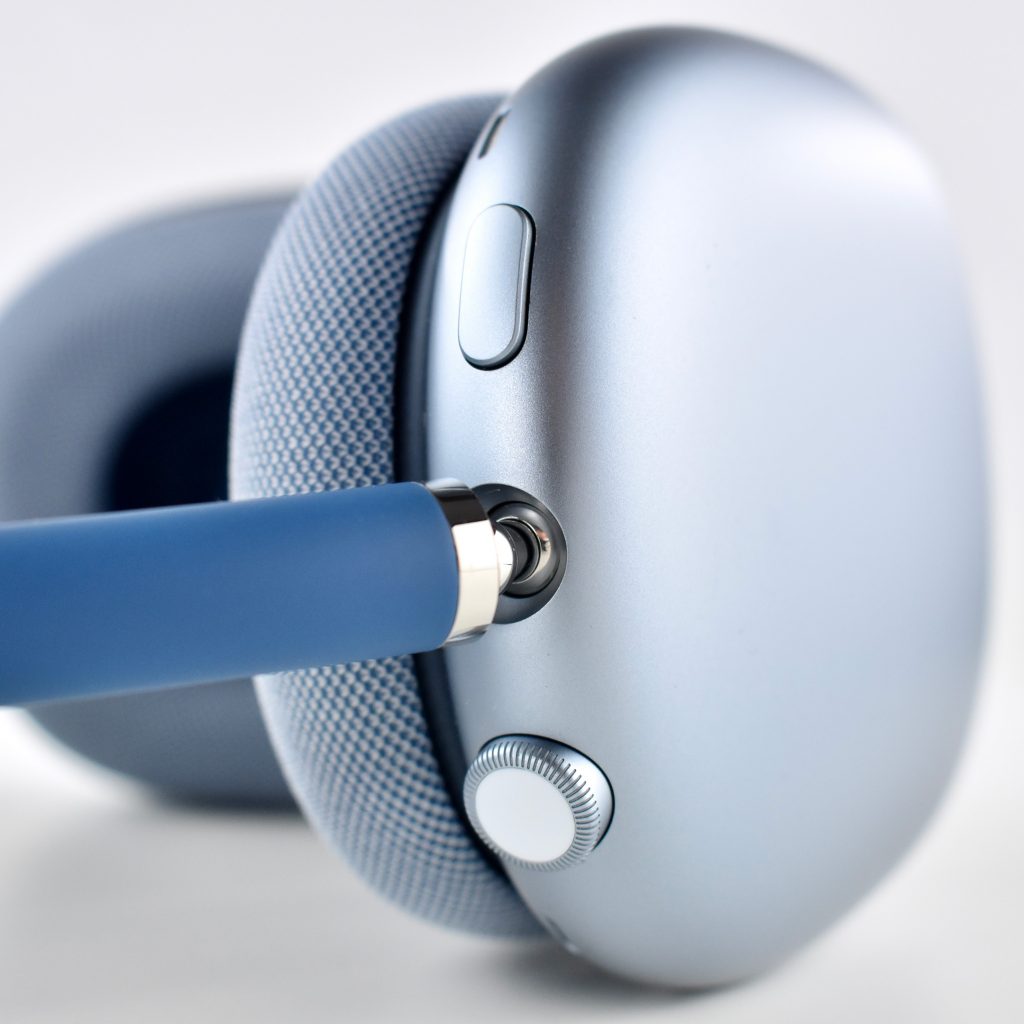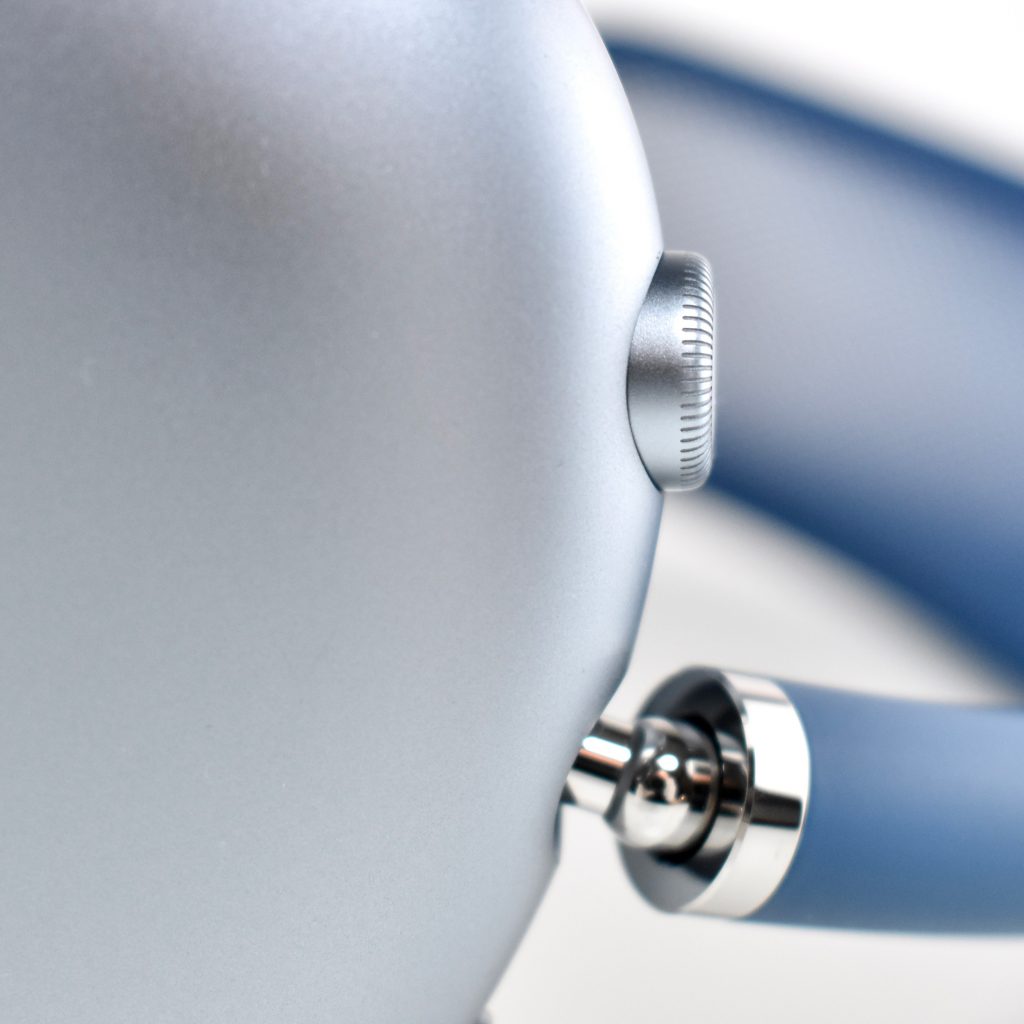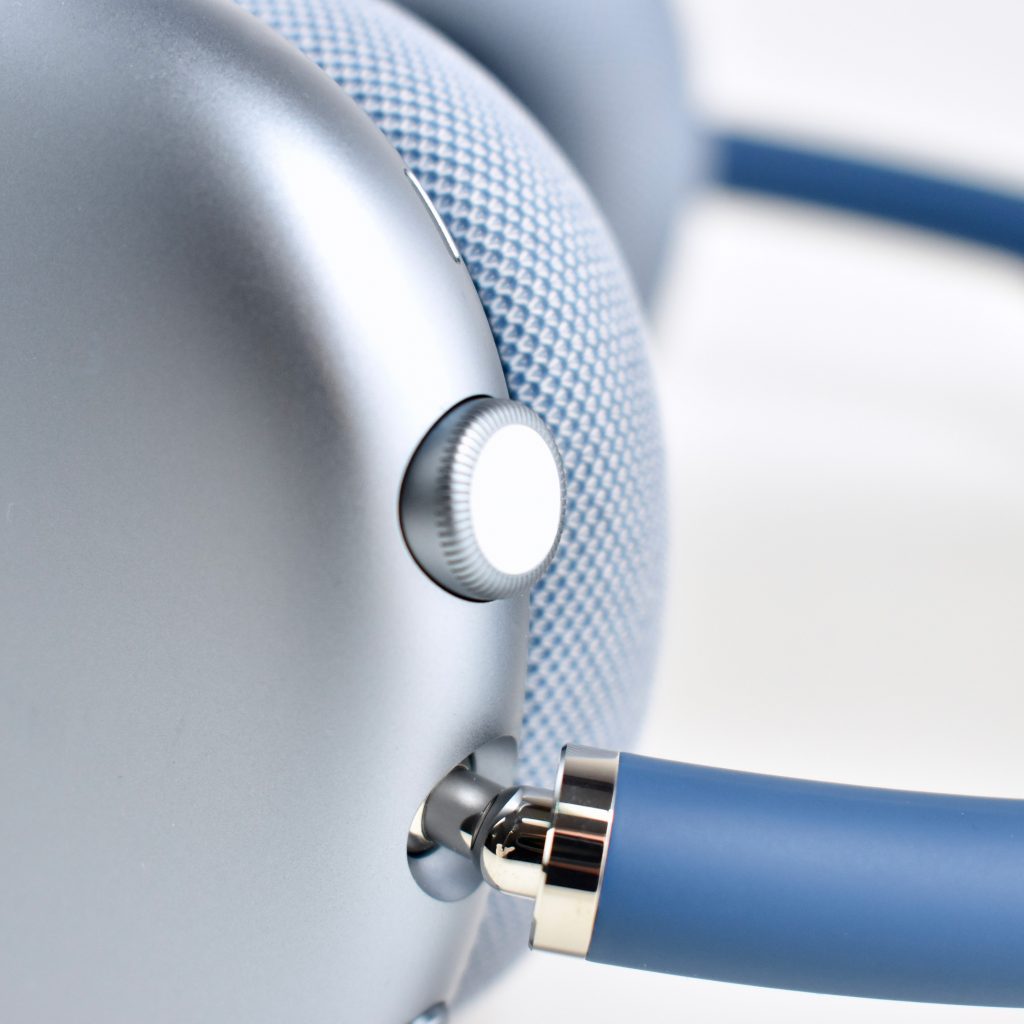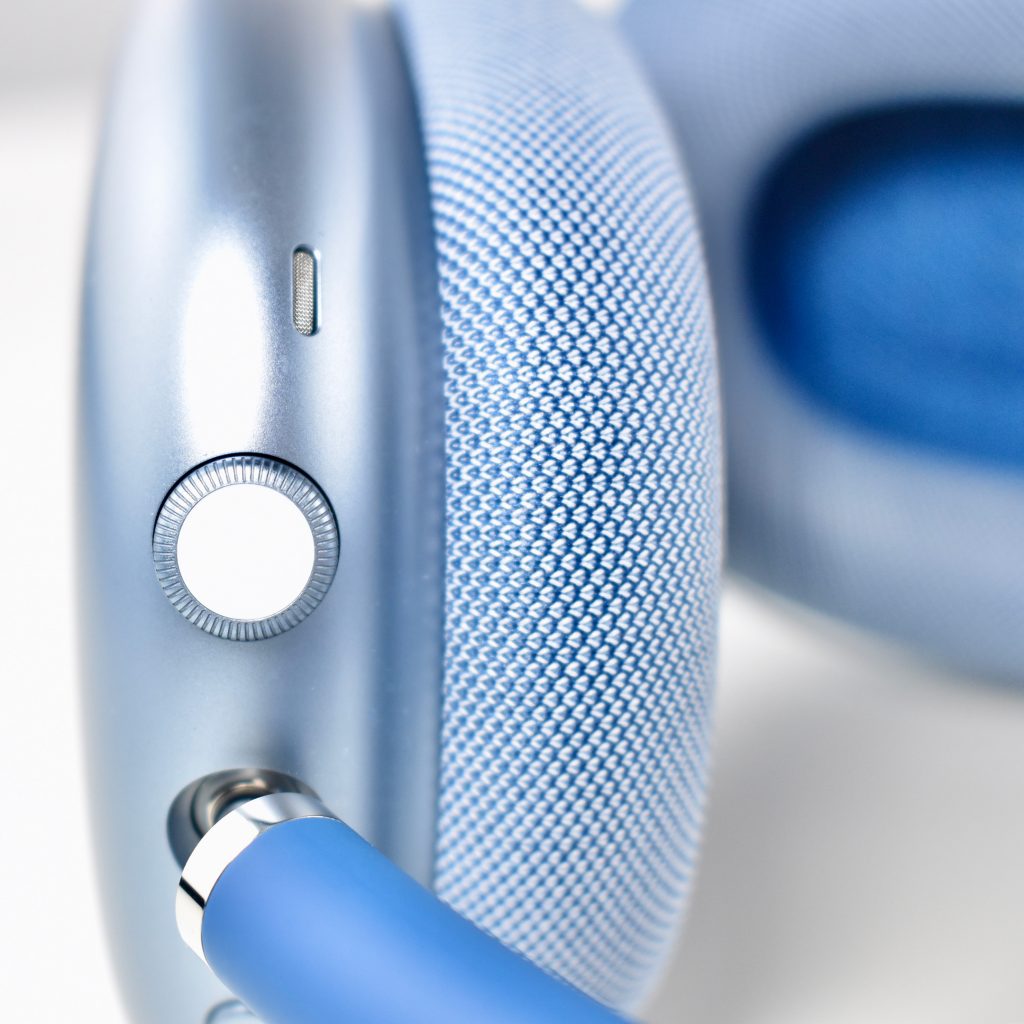Apple announced their AirPods Max over-ear headphones on December 8, 2020, and they shipped one week later on December 15. The original press release touted:
“AirPods Max feature incredible high-fidelity audio, Adaptive EQ, Active Noise Cancellation, and spatial audio”
The headphones featured a brand new design and included the Digital Crown from the Apple Watch as the primary control interface. Materials included a “breathable knit mesh canopy” that spanned the headband to reduce pressure on the head while wearing the headphones for extended periods. The headband frame was made from stainless steel and telescoped to allow a custom fit. The ear cushions were made from a “custom-designed mesh textile [that] wraps the ear cushions to provide pillow-like softness while listening.” The outer ear cup was aluminum in a rectangular shape with rounded corners (as opposed to a round or oval design seen on other over-the-ear headphone designs).
The audio technology included “H1 chips, and advanced software to power computational audio for a breakthrough listening experience with Adaptive EQ, Active Noise Cancellation, Transparency mode, and spatial audio.” The battery on AirPods Max was advertised at 20 hours.
AirPods Max headphones were available in five colors: space gray, silver, sky blue, green, and pink. The colors consistently referred to the color of the outer ear cup of the AirPods Max—since each color option used a different combination of accent colors. Space gray used space gray outer ear cups with black ear cushions and headband. Silver used silver outer ear cups with white ear cushions and headband. Sky blue used light blue outer ear cups with light blue ear cushions and a dark blue headband. Green used light green outer ear cups with light green ear cushions and a pale green (white tinted with green) headband. Pink used pale pink (similar to Apple’s rose gold) outer ear cups with dark pink ear cushions and a red headband.
AirPods Max Ear Cushions were also sold separately by Apple as replacements—or to allow users to customize their headphone style. By mixing and matching the Ear Cushions, 25 color combinations were possible, or 125 combinations if two different ear cushion colors were used.
The AirPods Max shipped with an arguably unusual case design that provided little protection, but allowed the headphones to go into “an ultralow power state that helps to preserve battery charge when not in use.” The case was frequently maligned by critics.
When AirPods Max were released, they were almost universally praised for their superior sound quality and noise-cancelling features, but panned for their high price of $549. The primary technical issue shared by some reviewers was the tendency for AirPods Max to “form condensation under the earcups and the water that is formed gets inside the drivers causing ear detection problems.”
This set of AirPods Max headphones is Space Gray.
Sources: Apple (Newsroom, AirPods Max, ear cushions), Wikipedia
